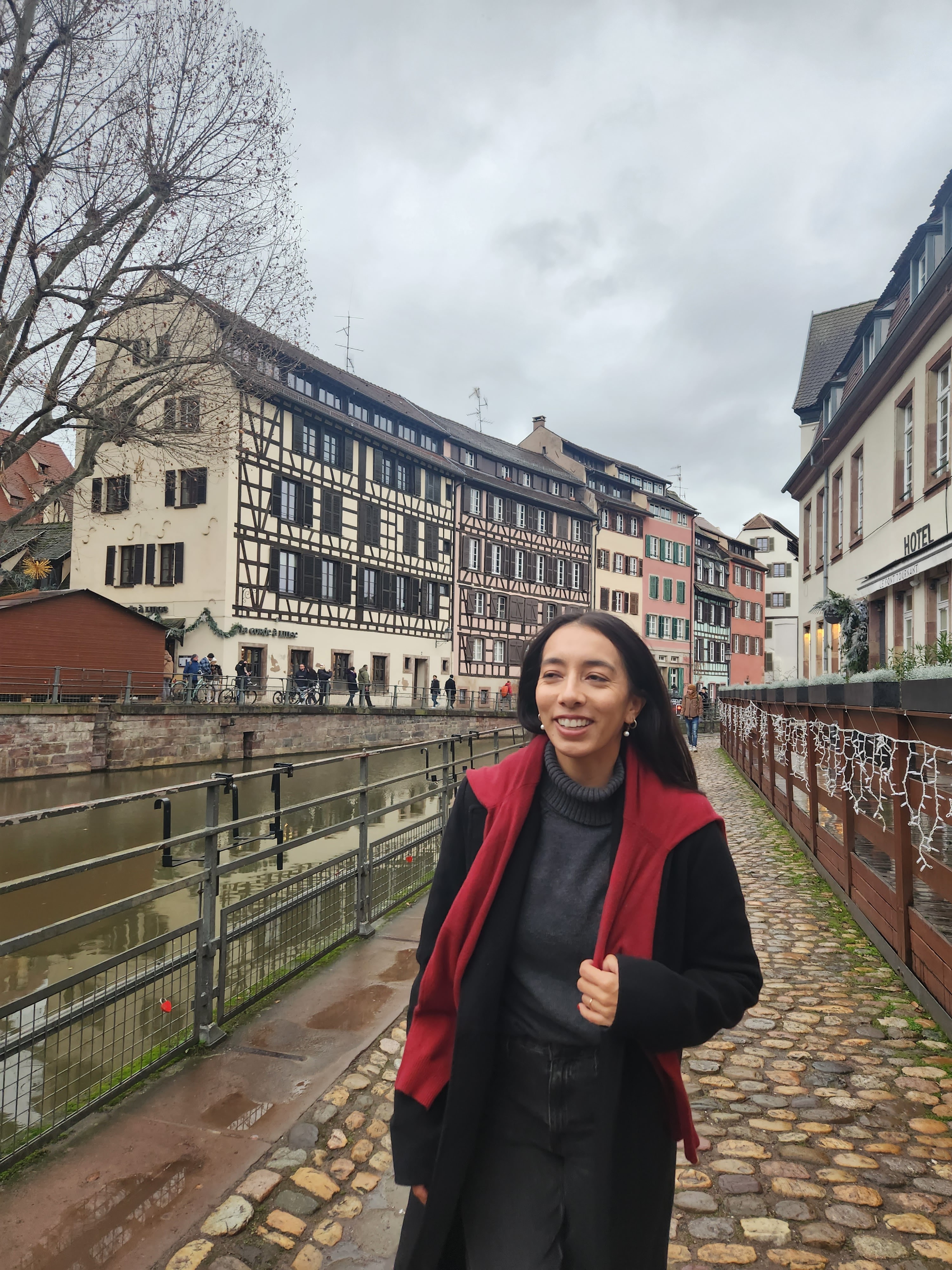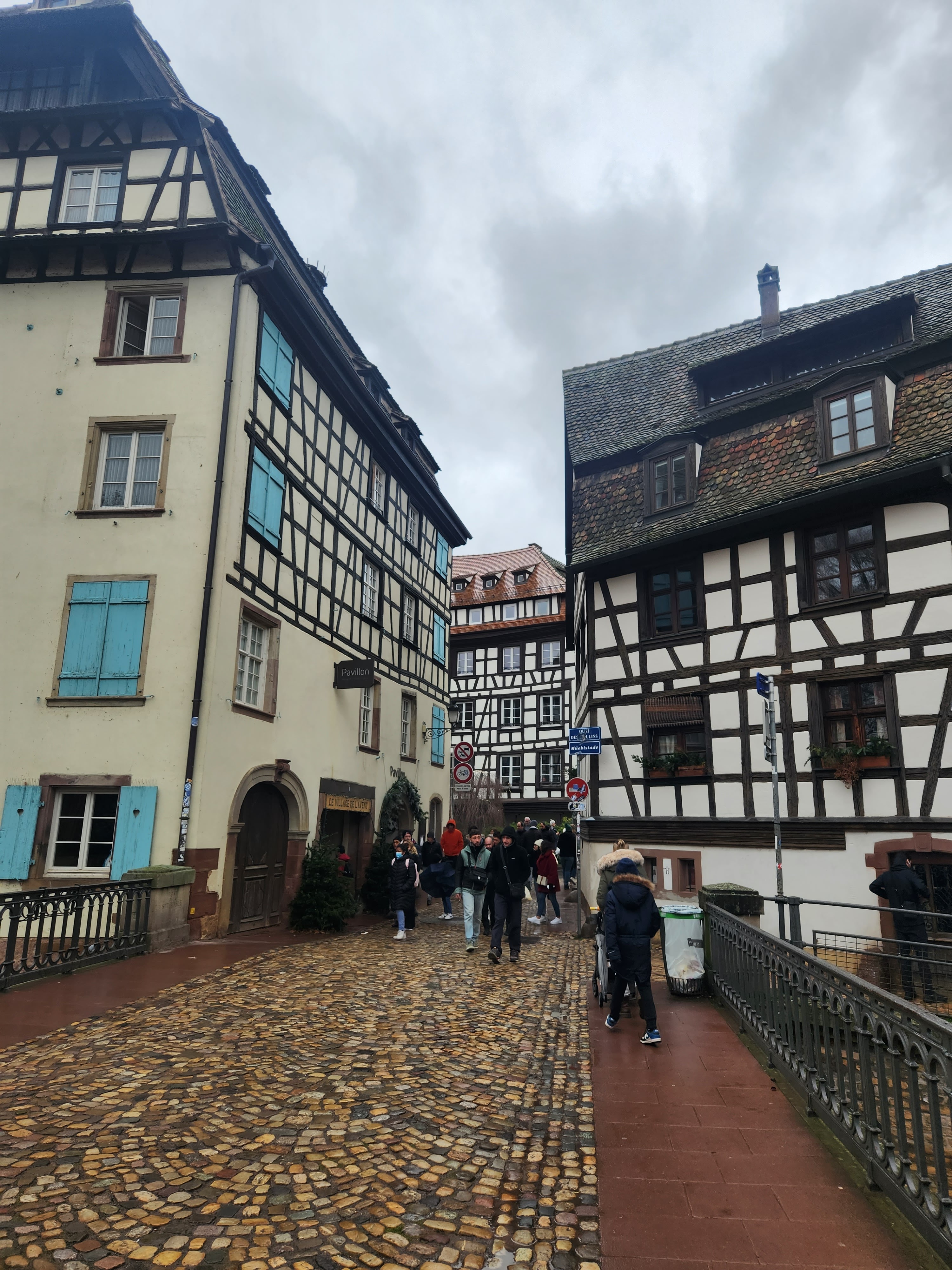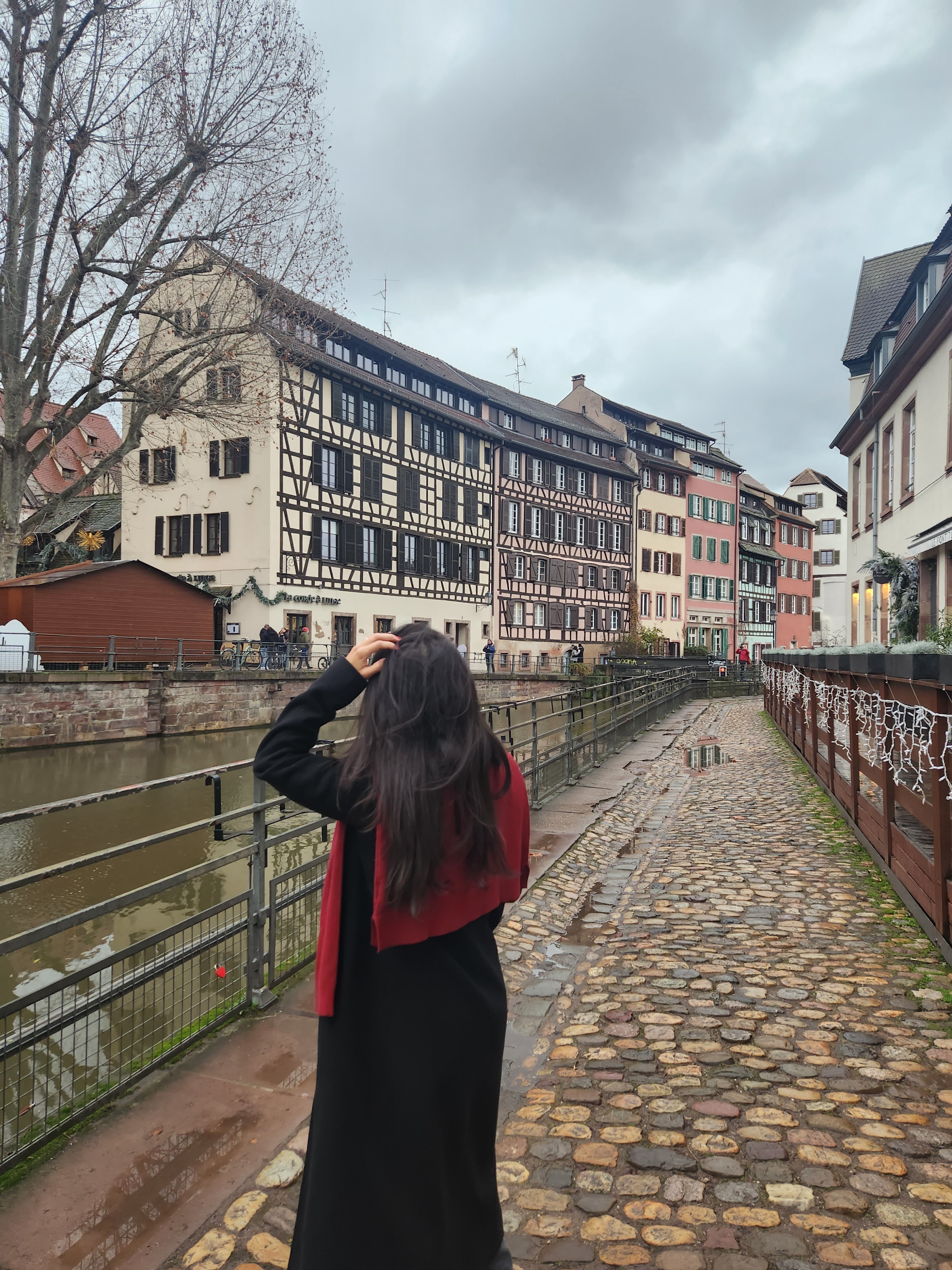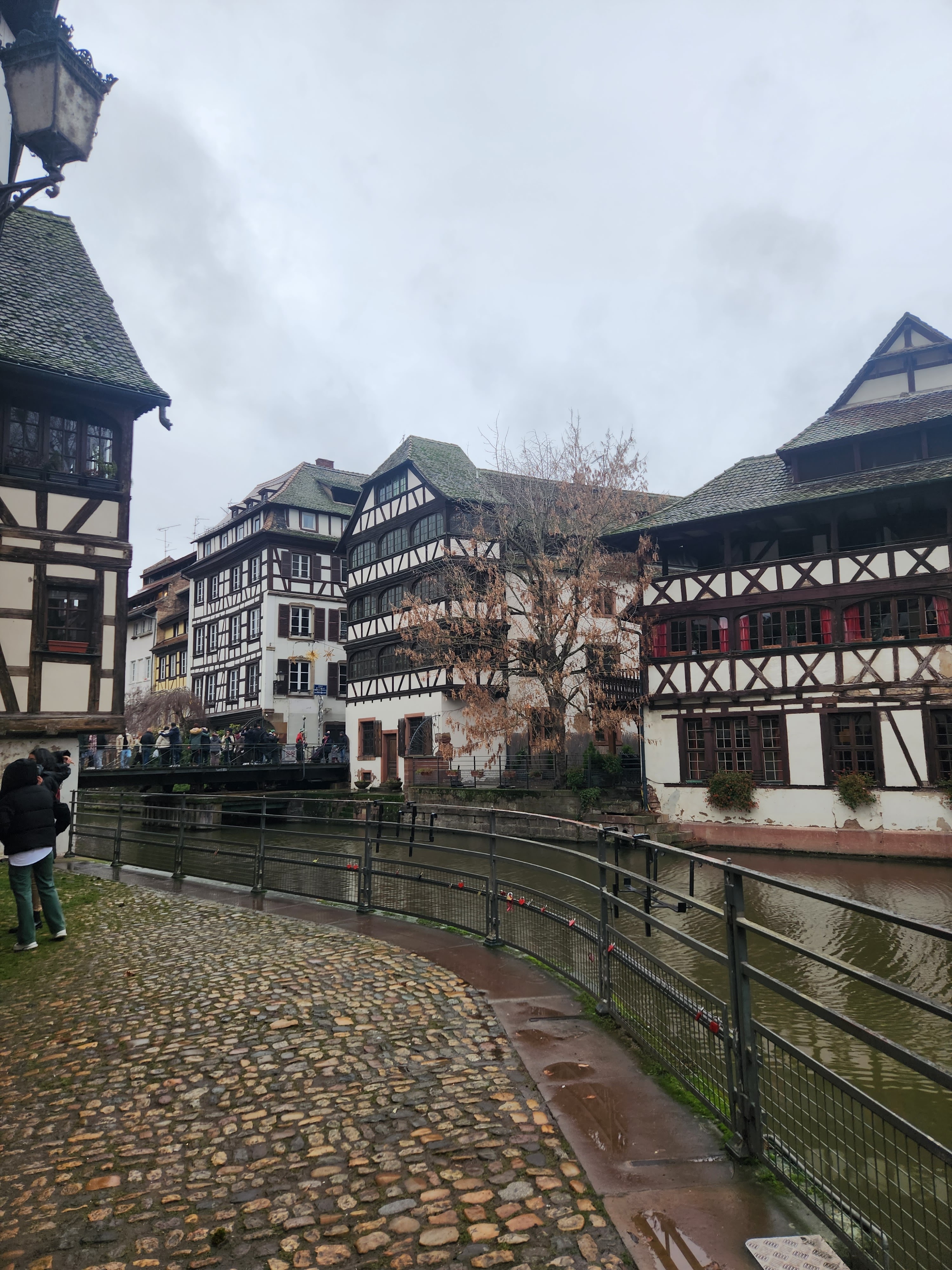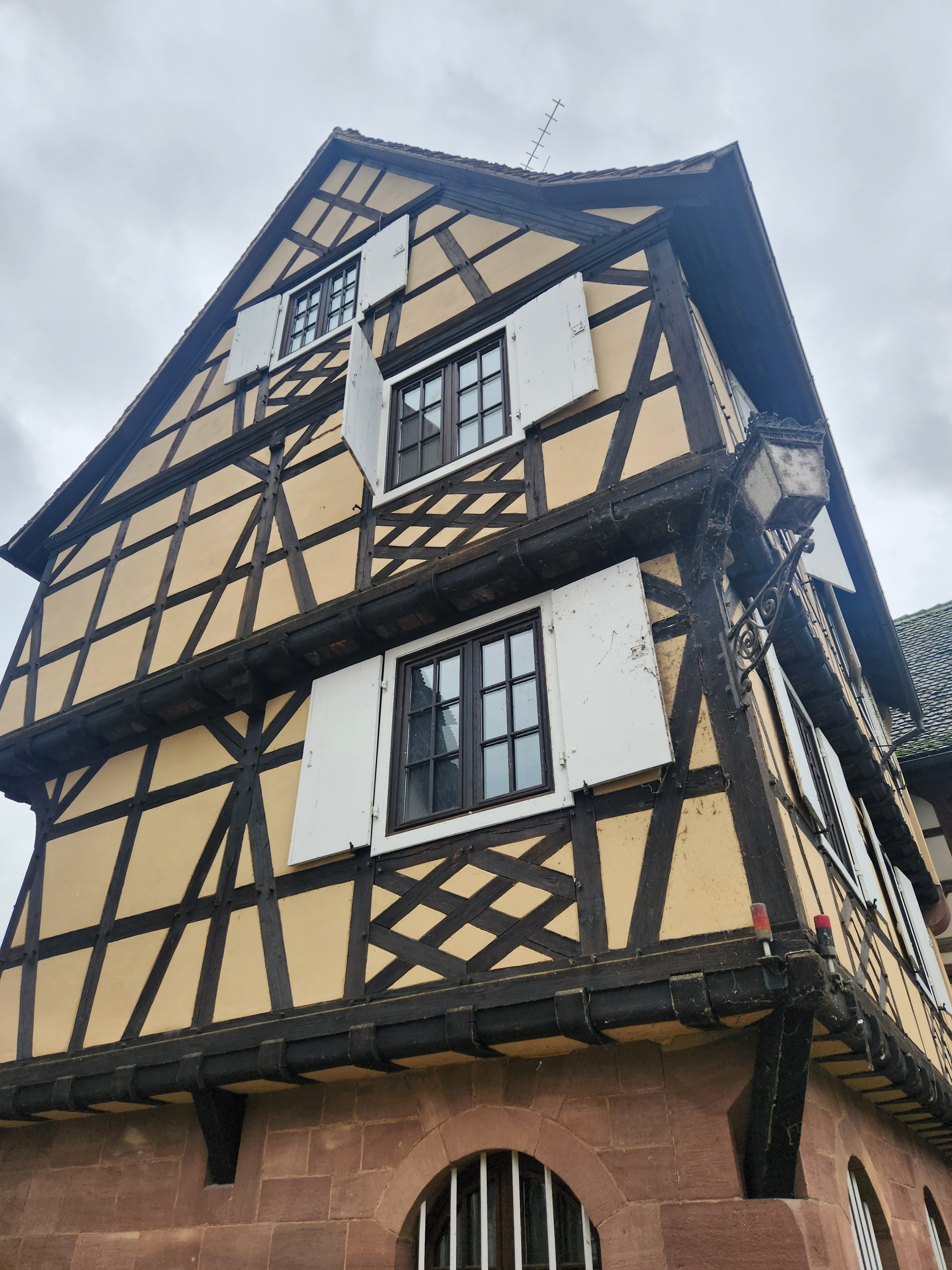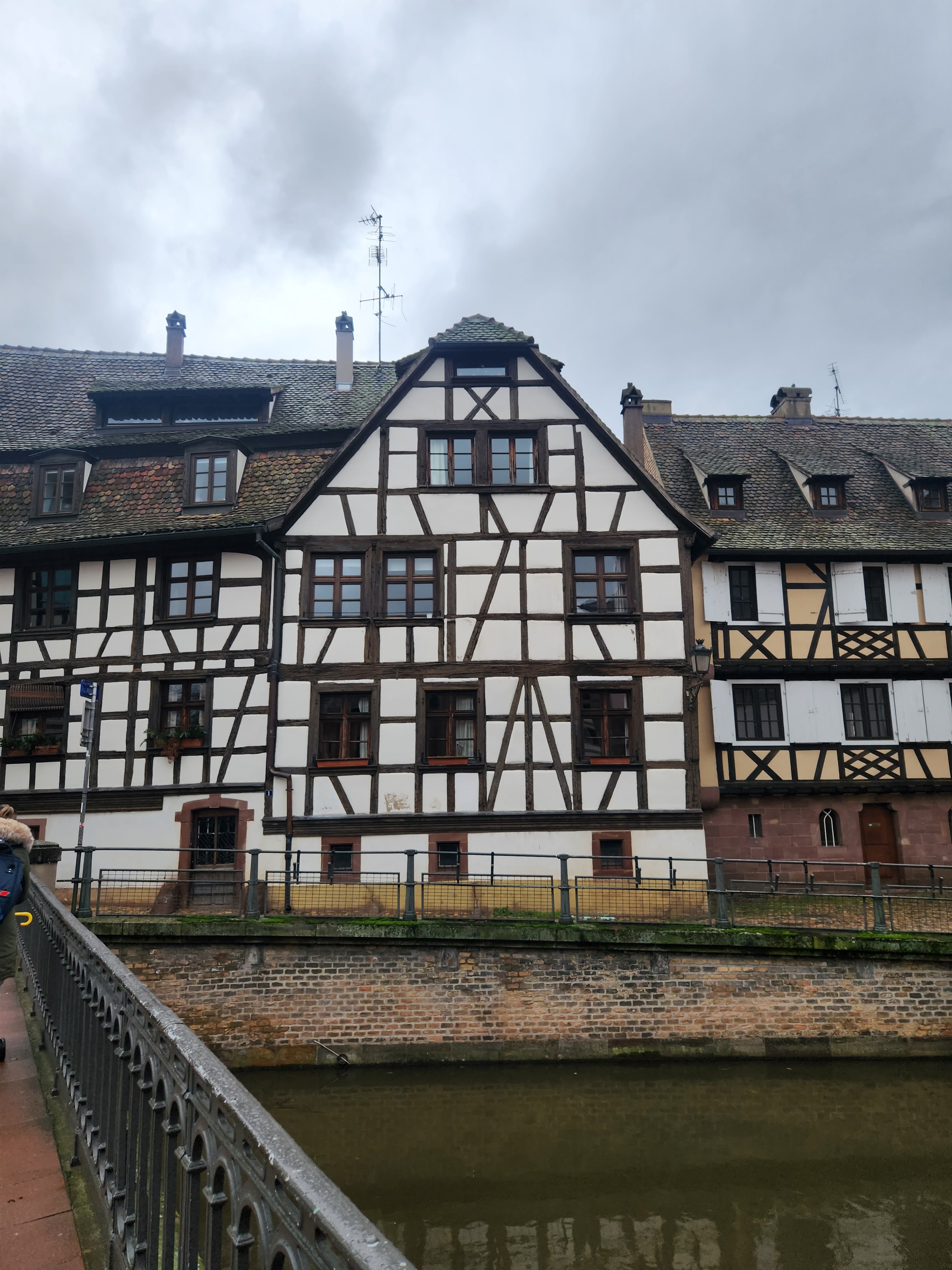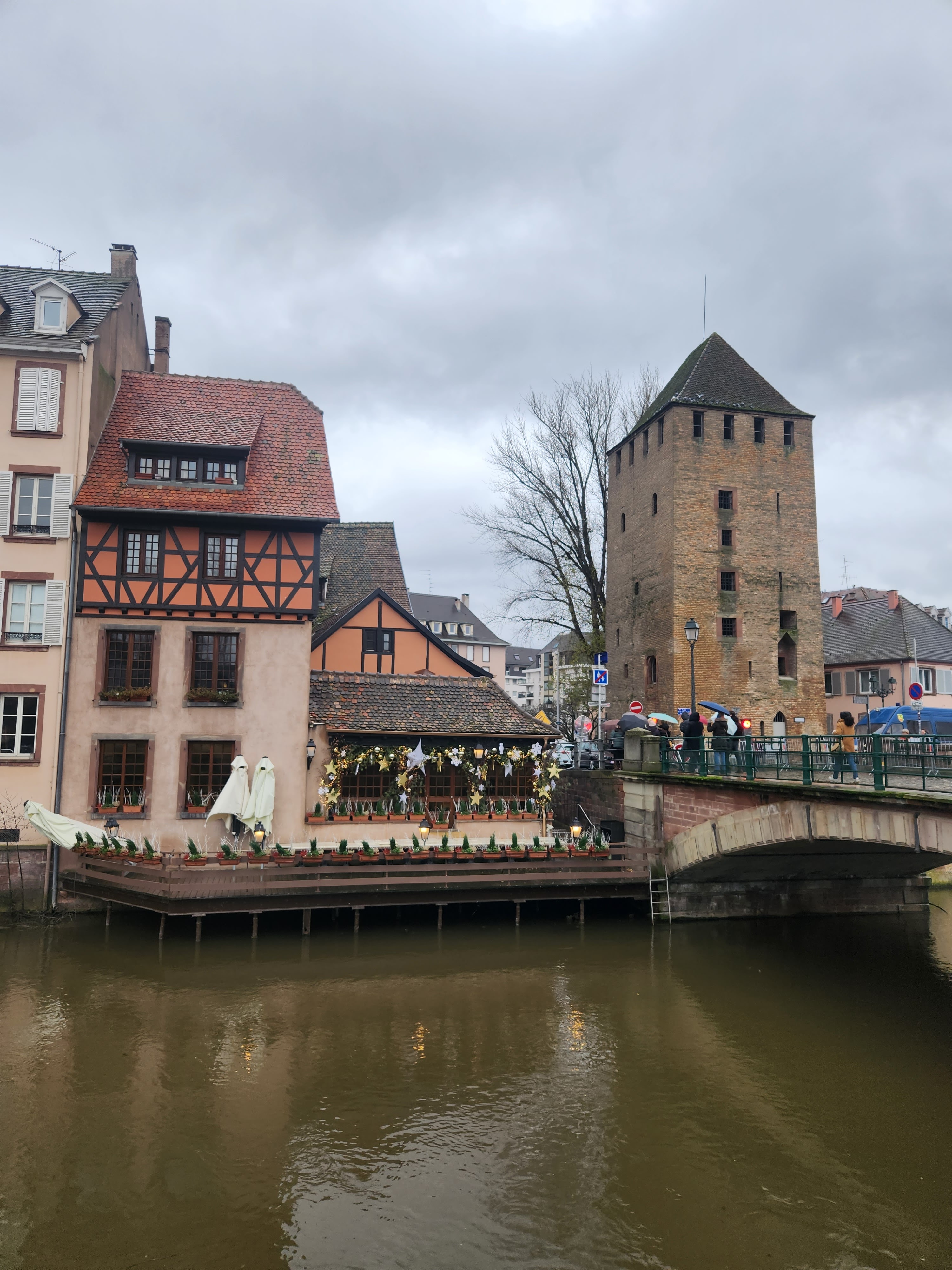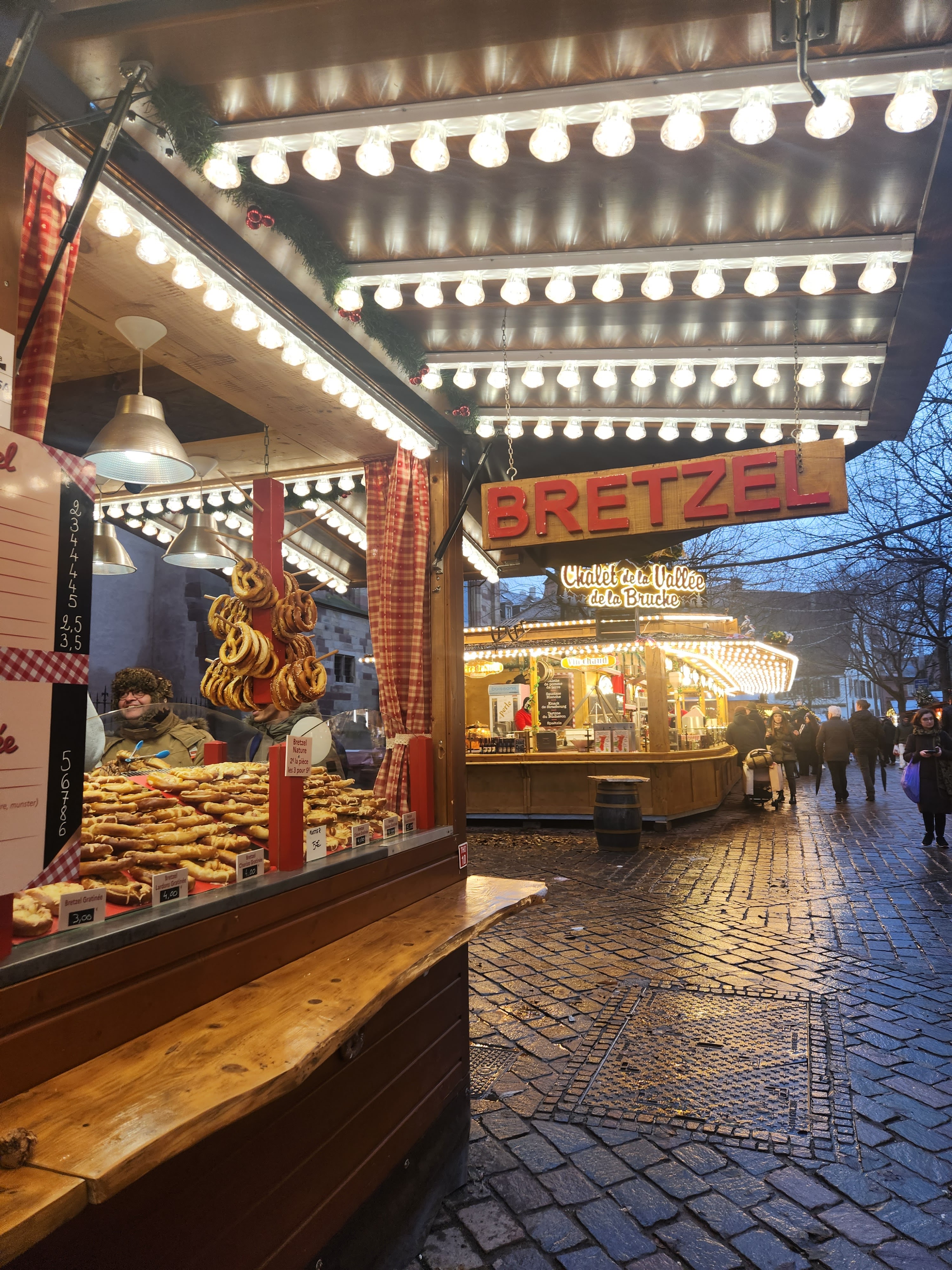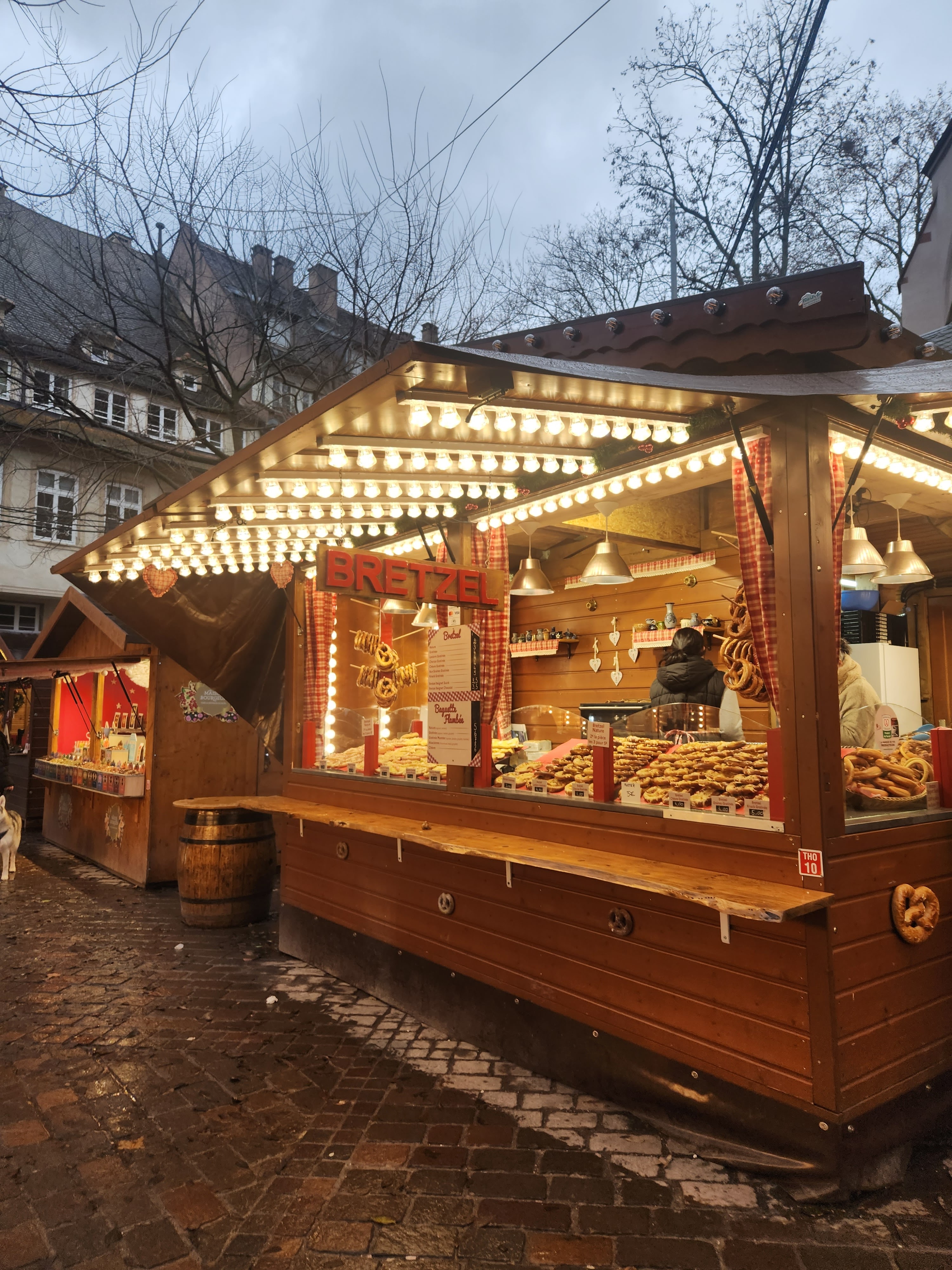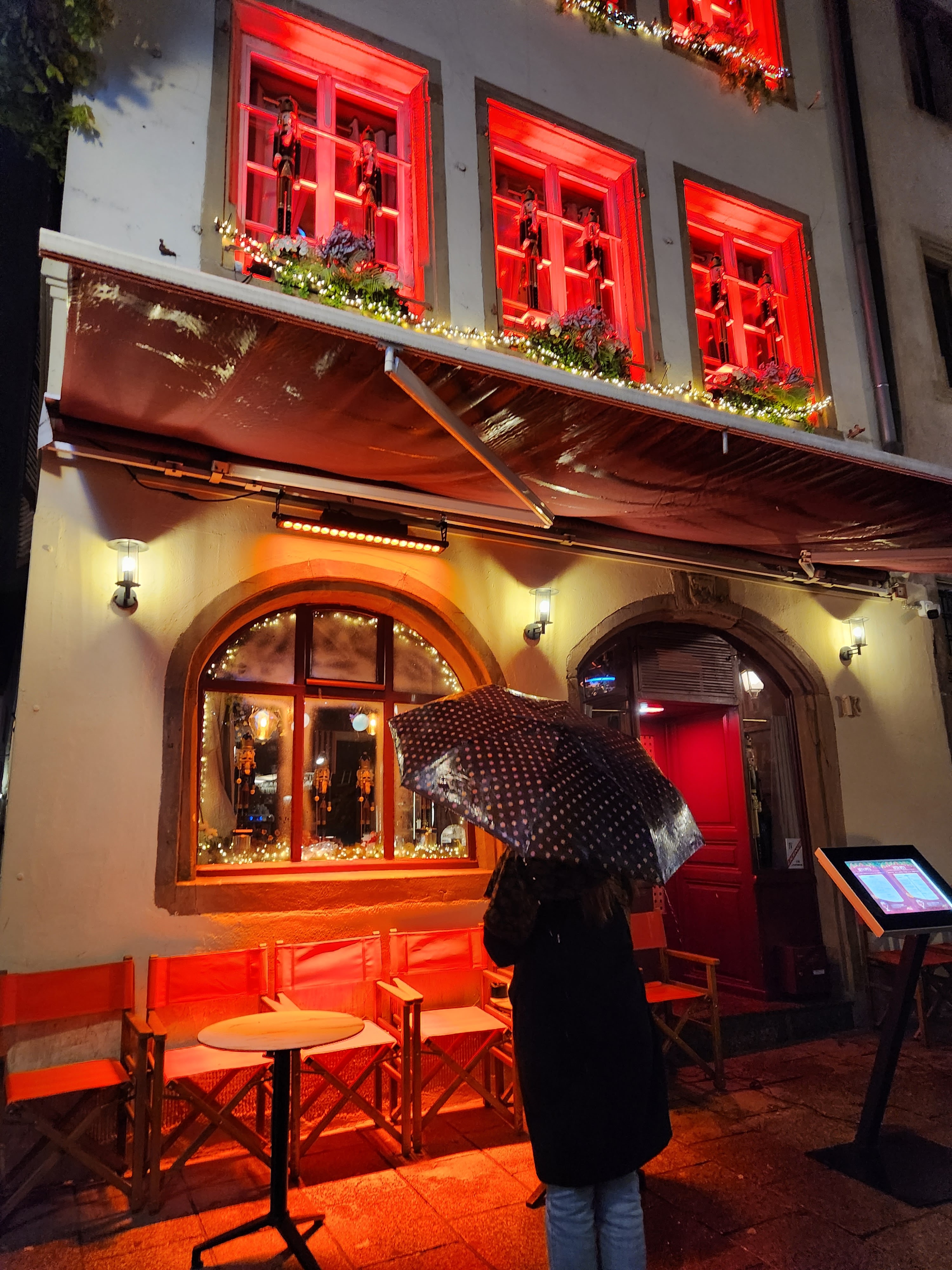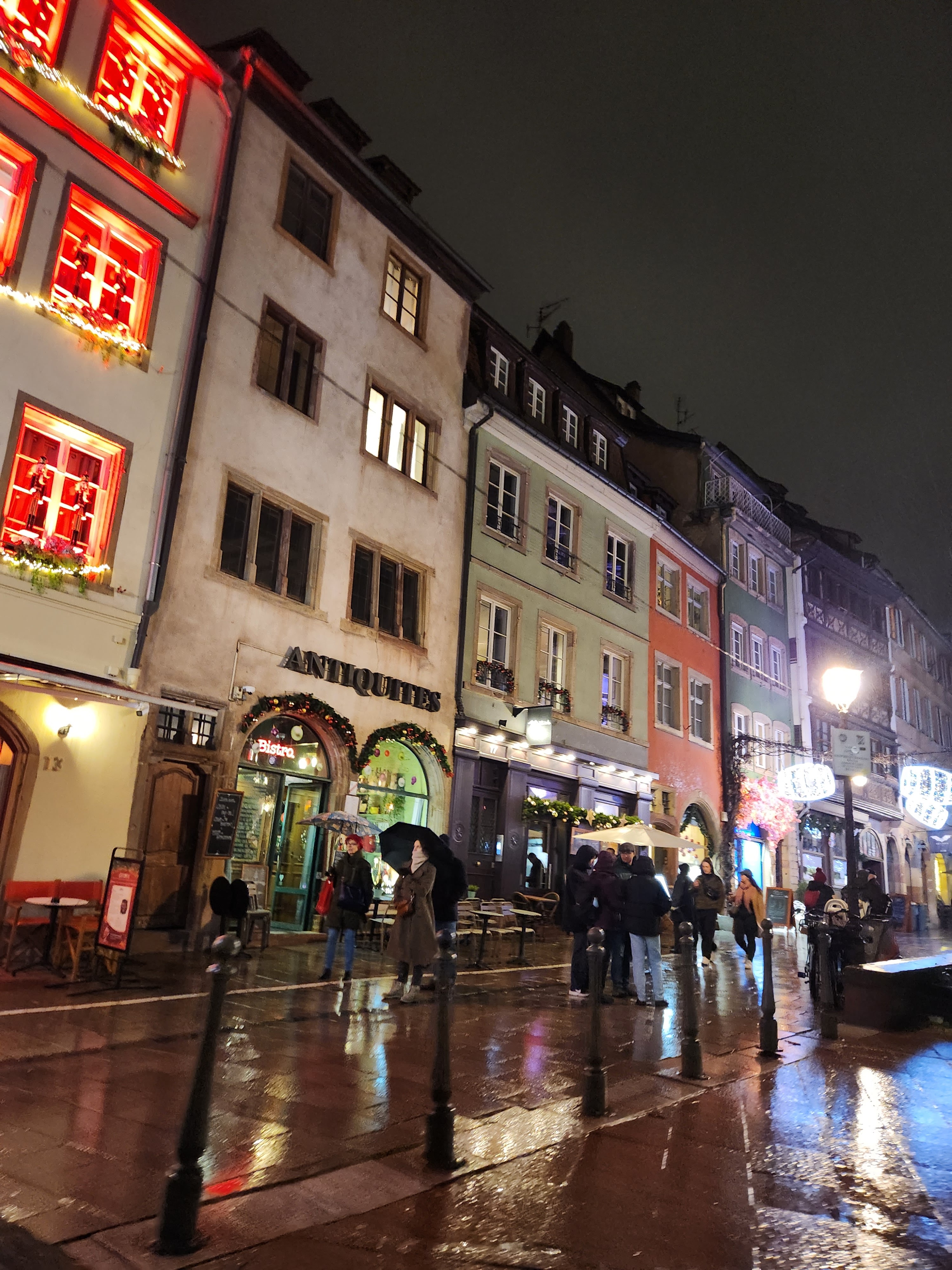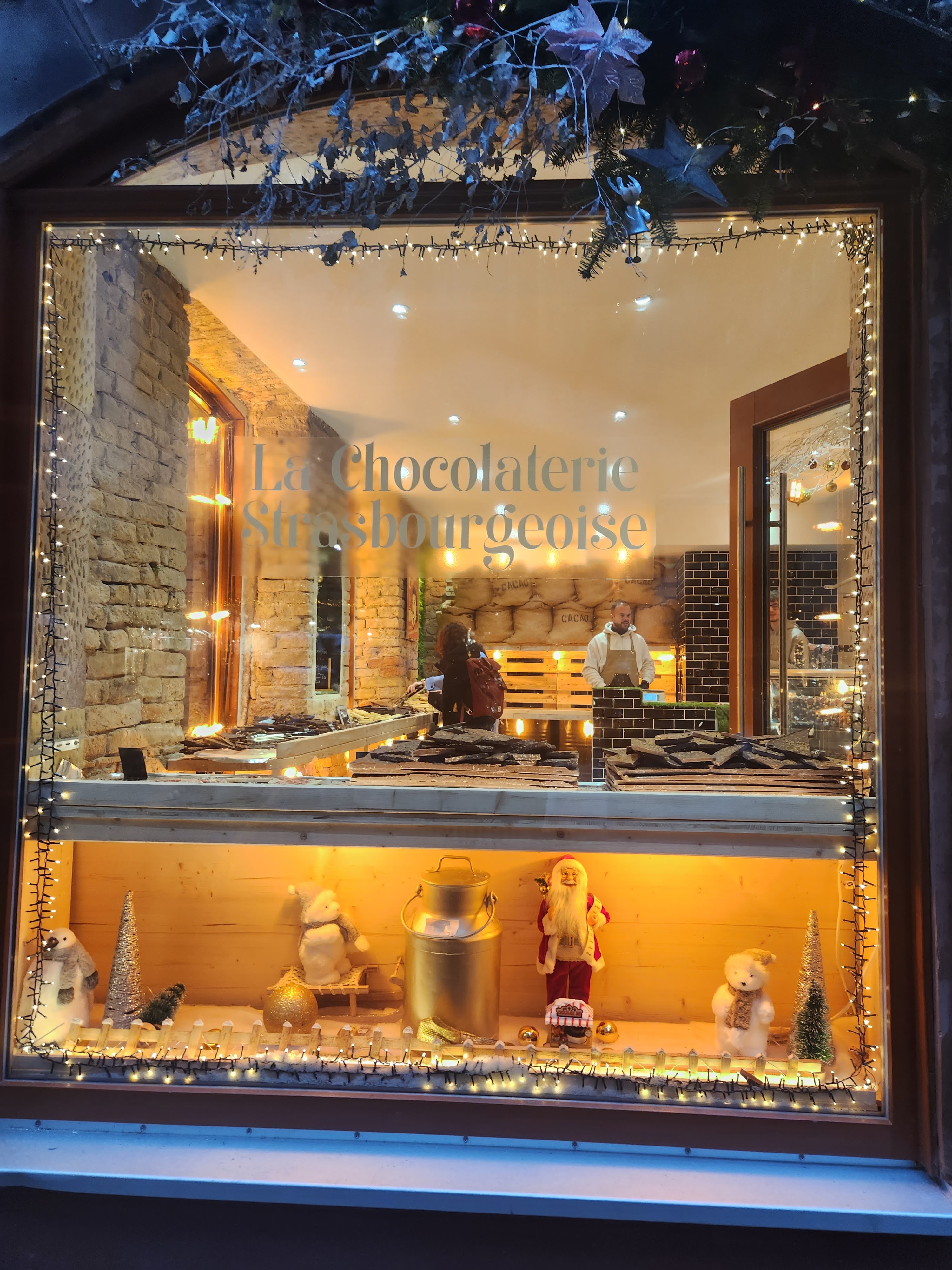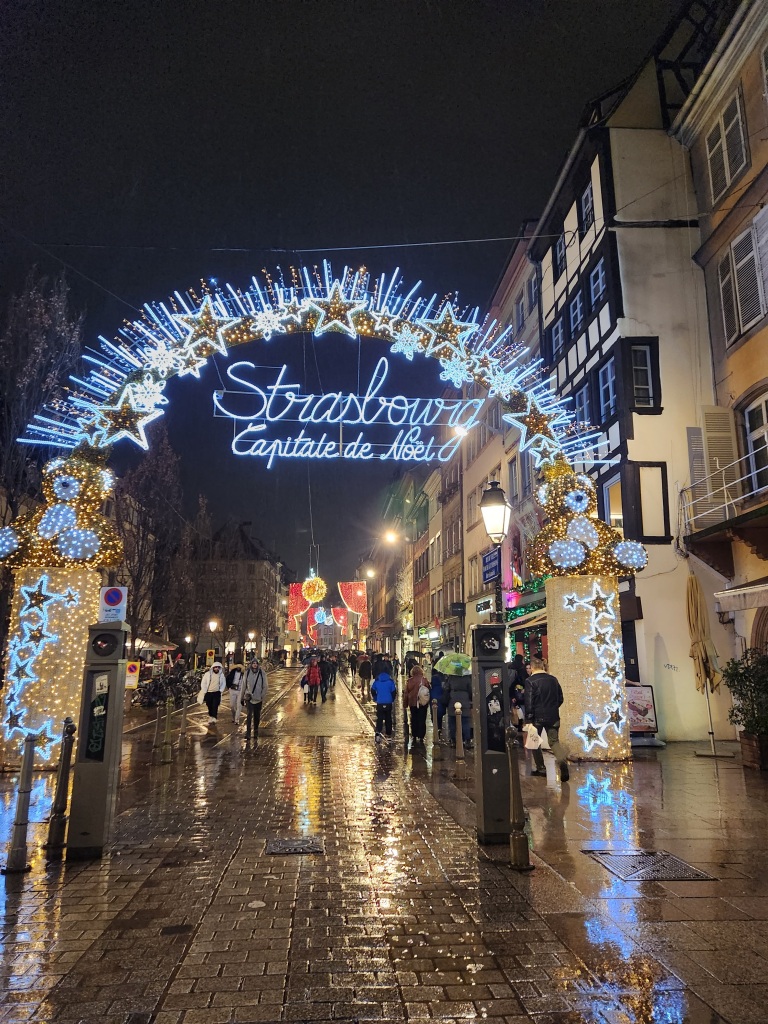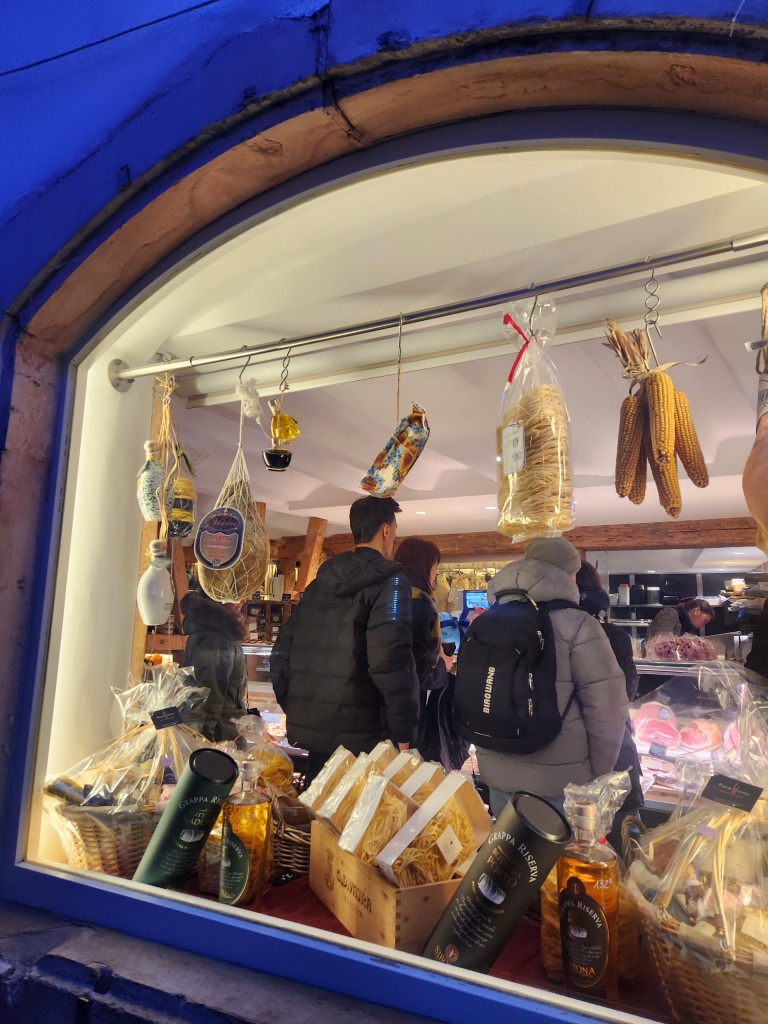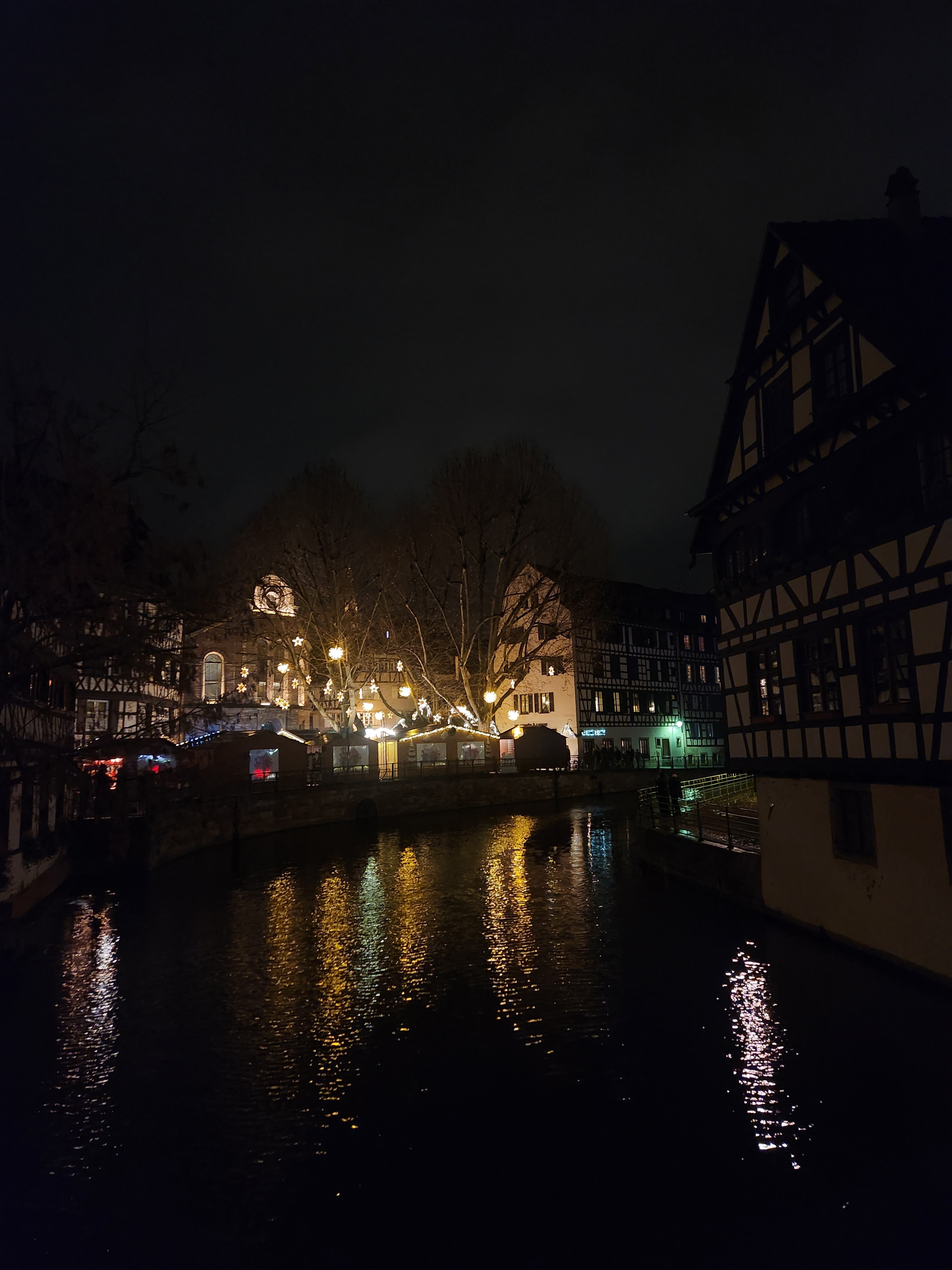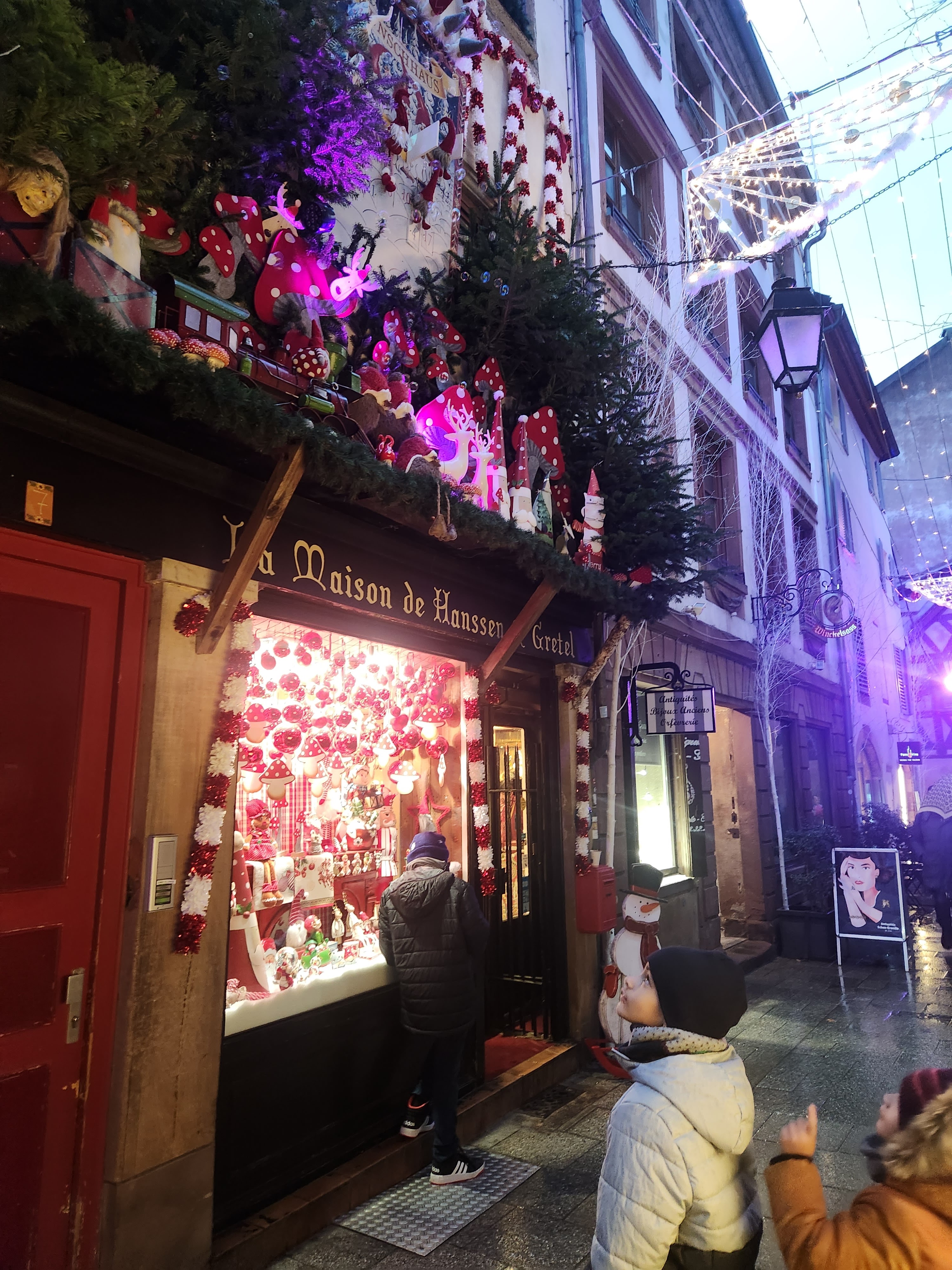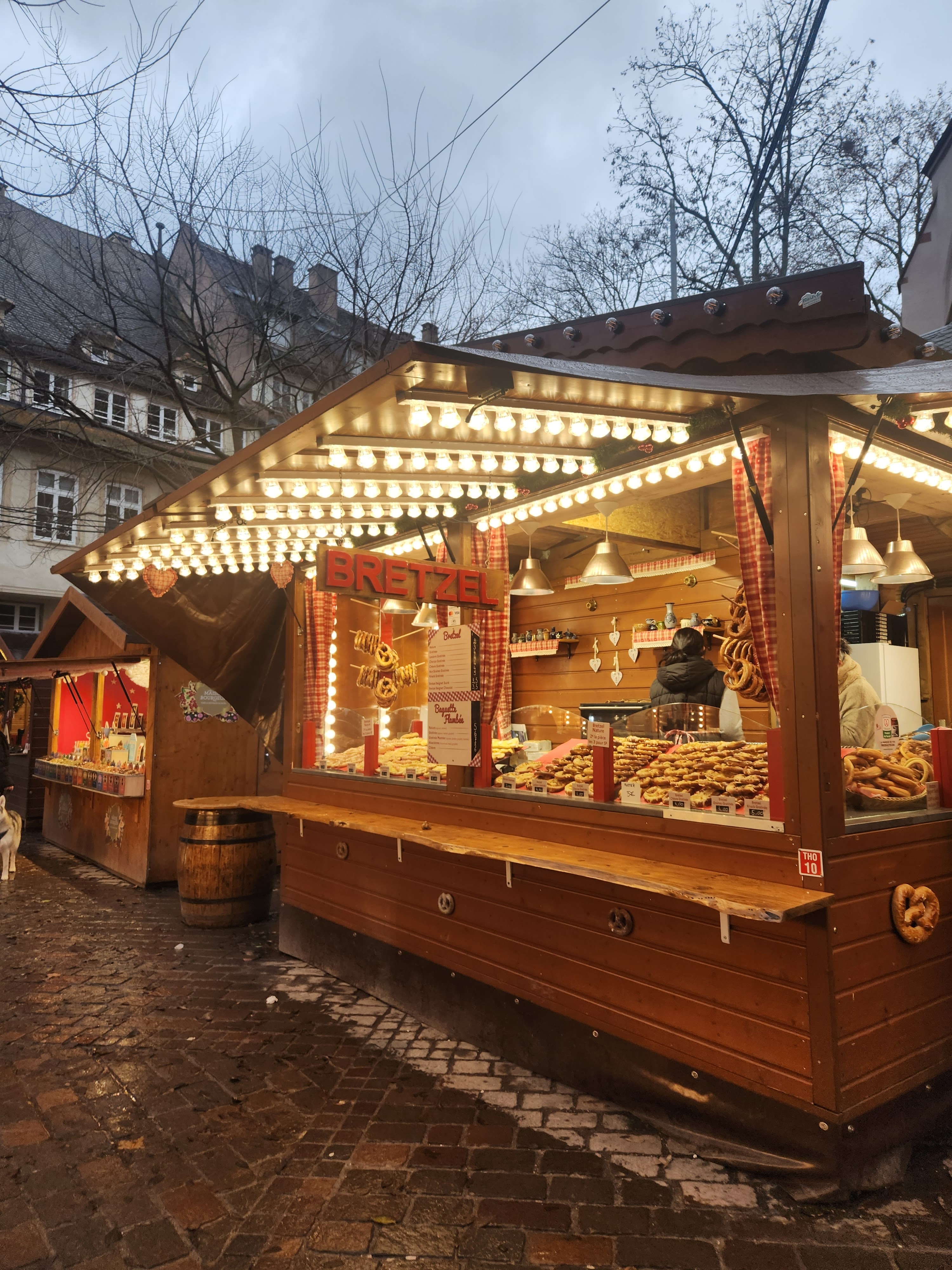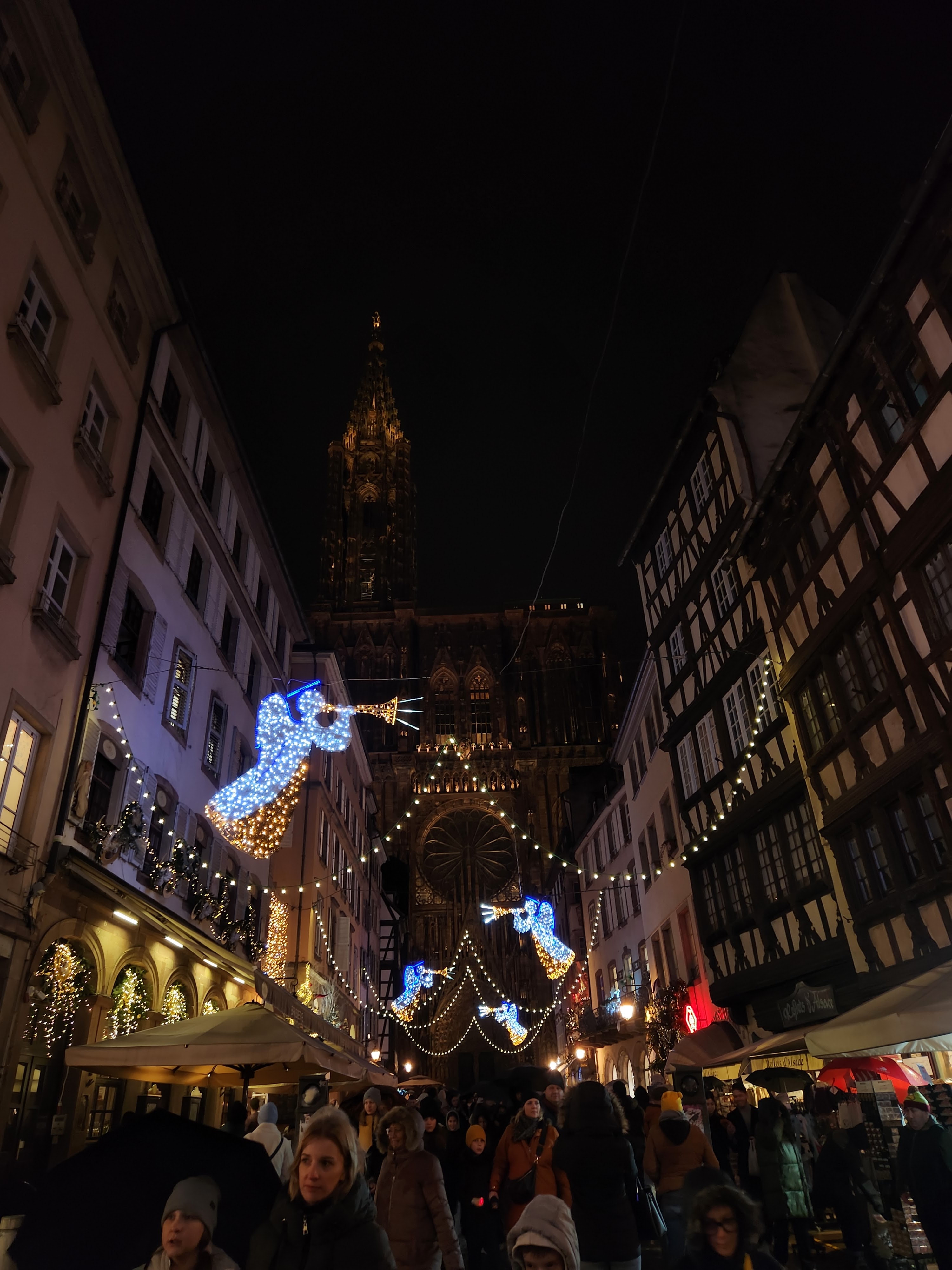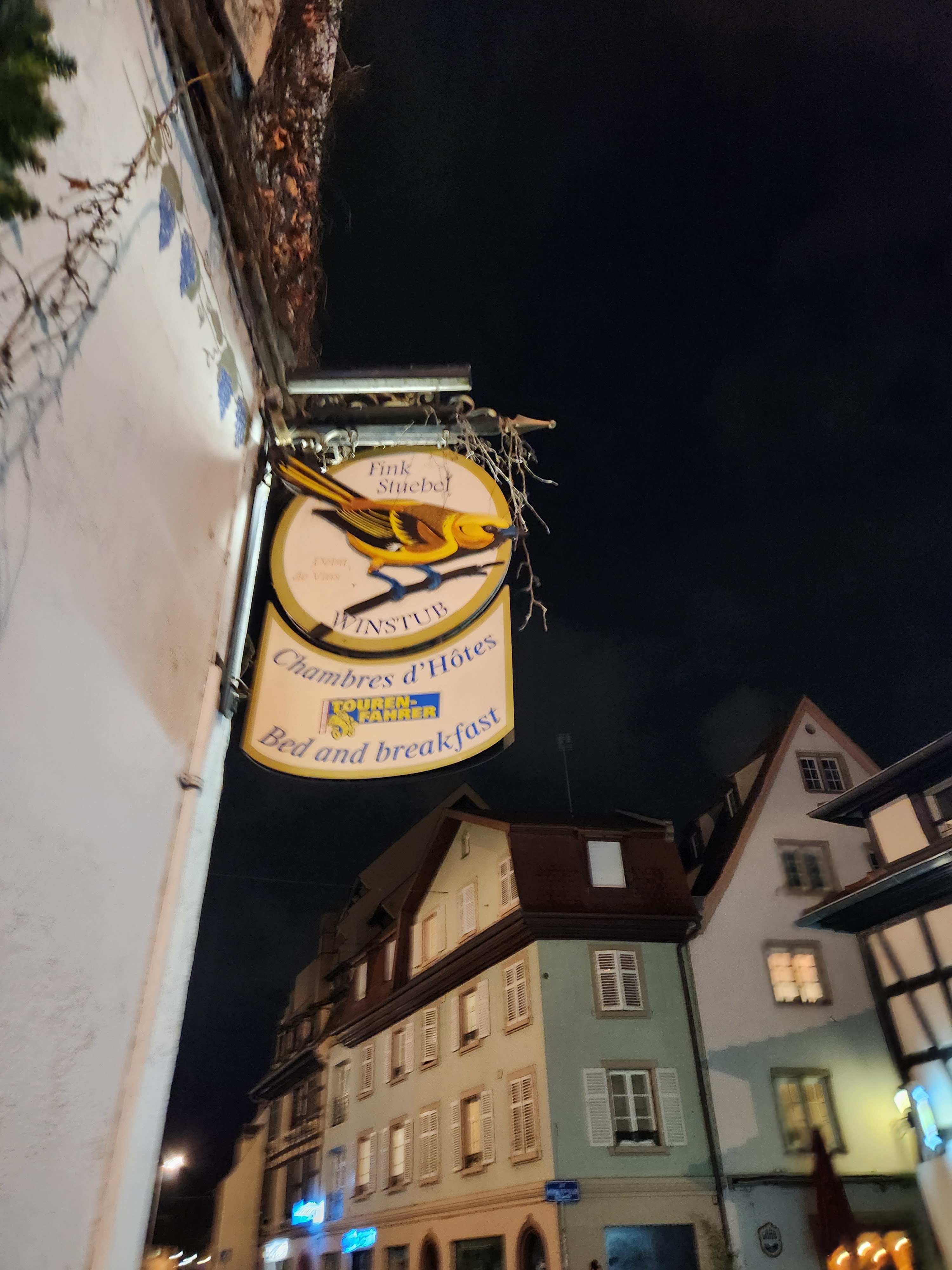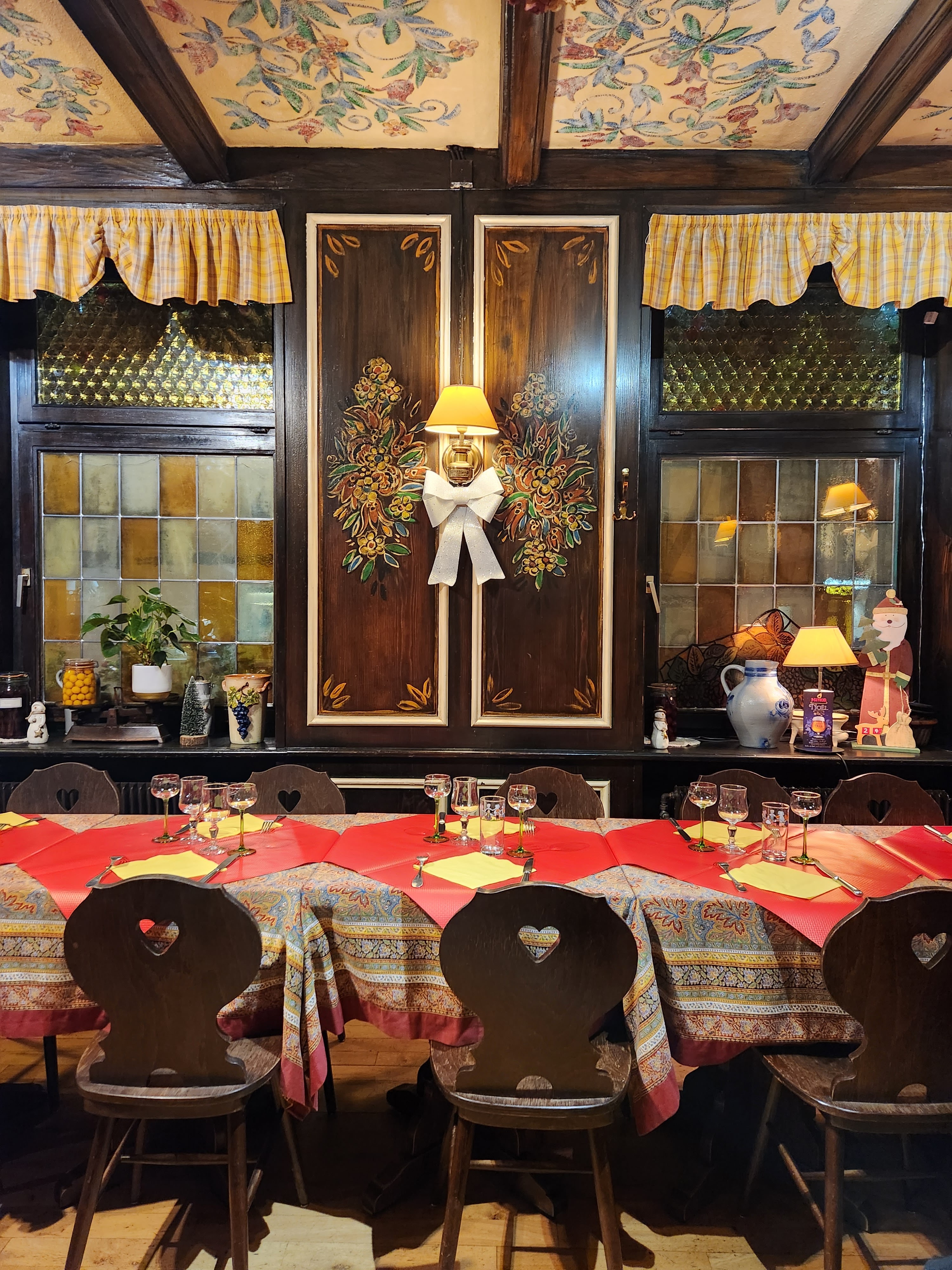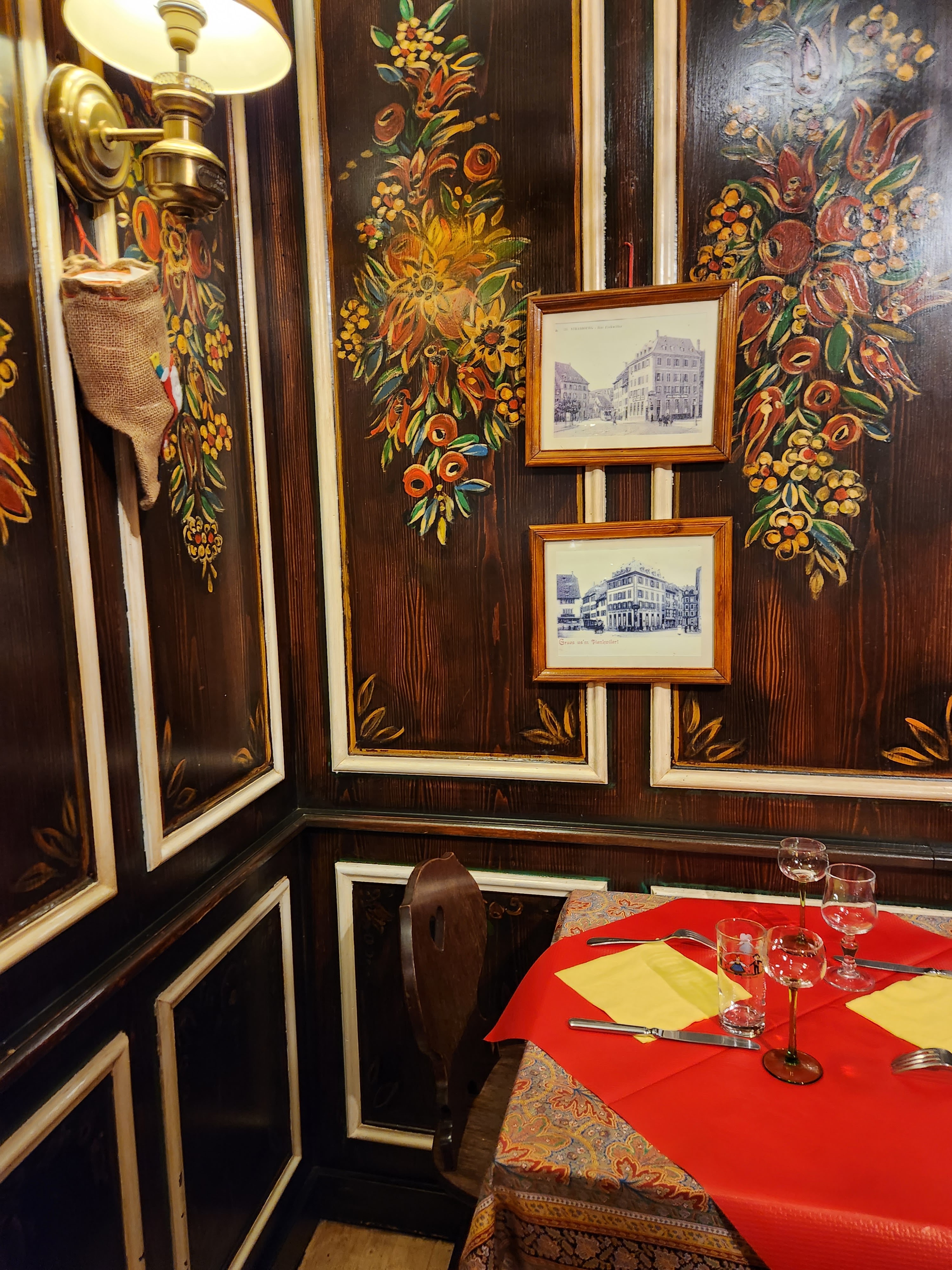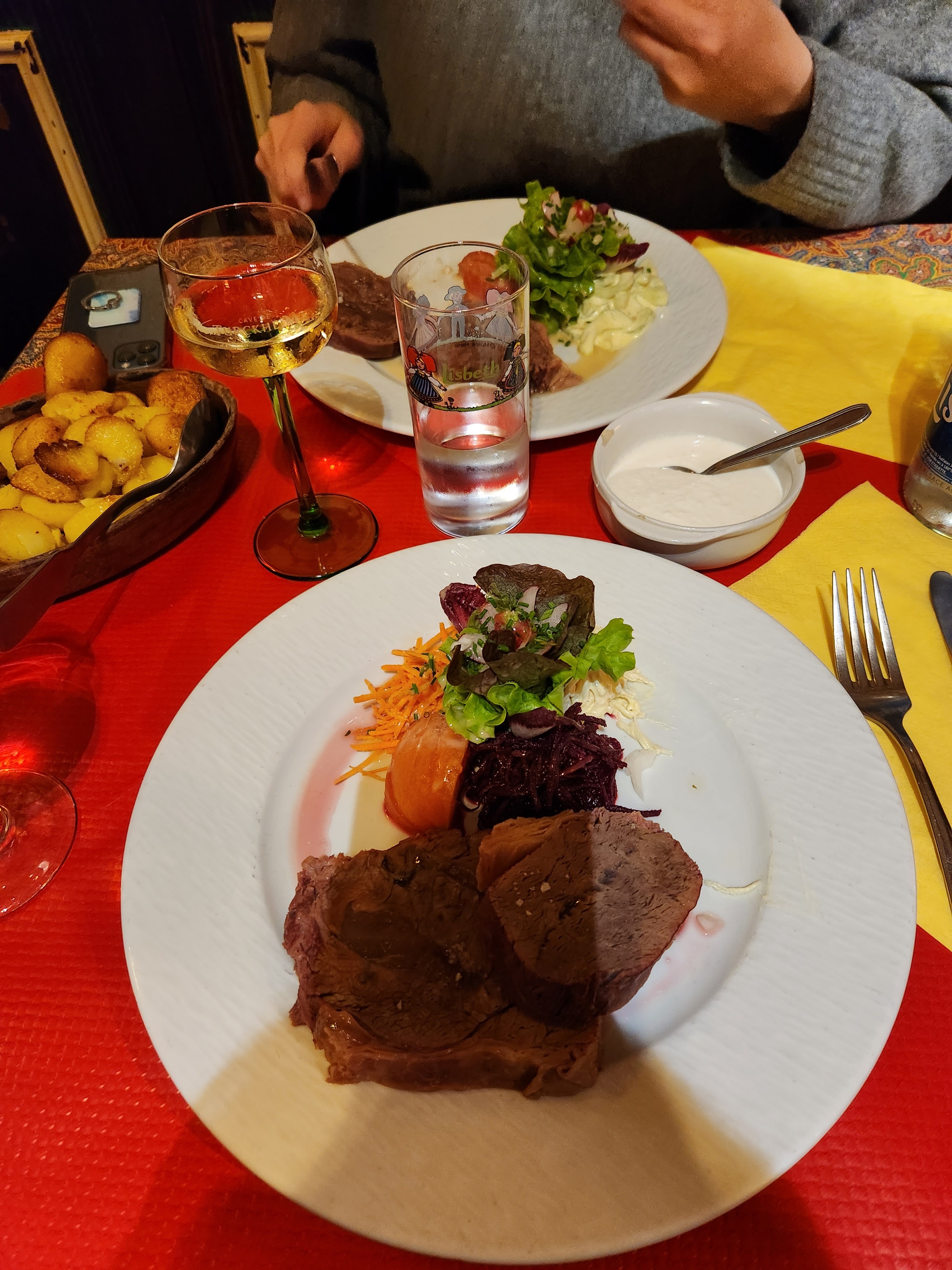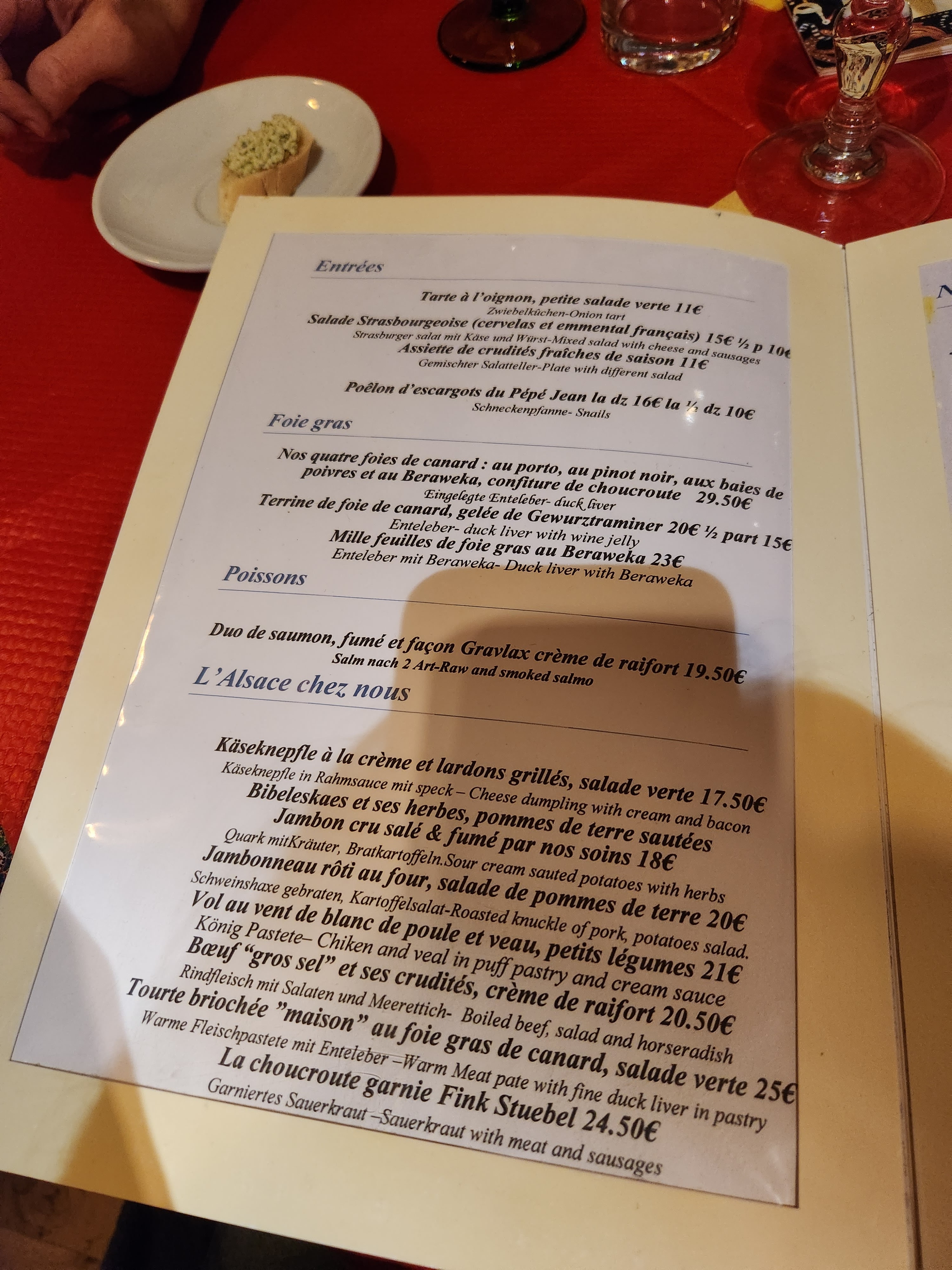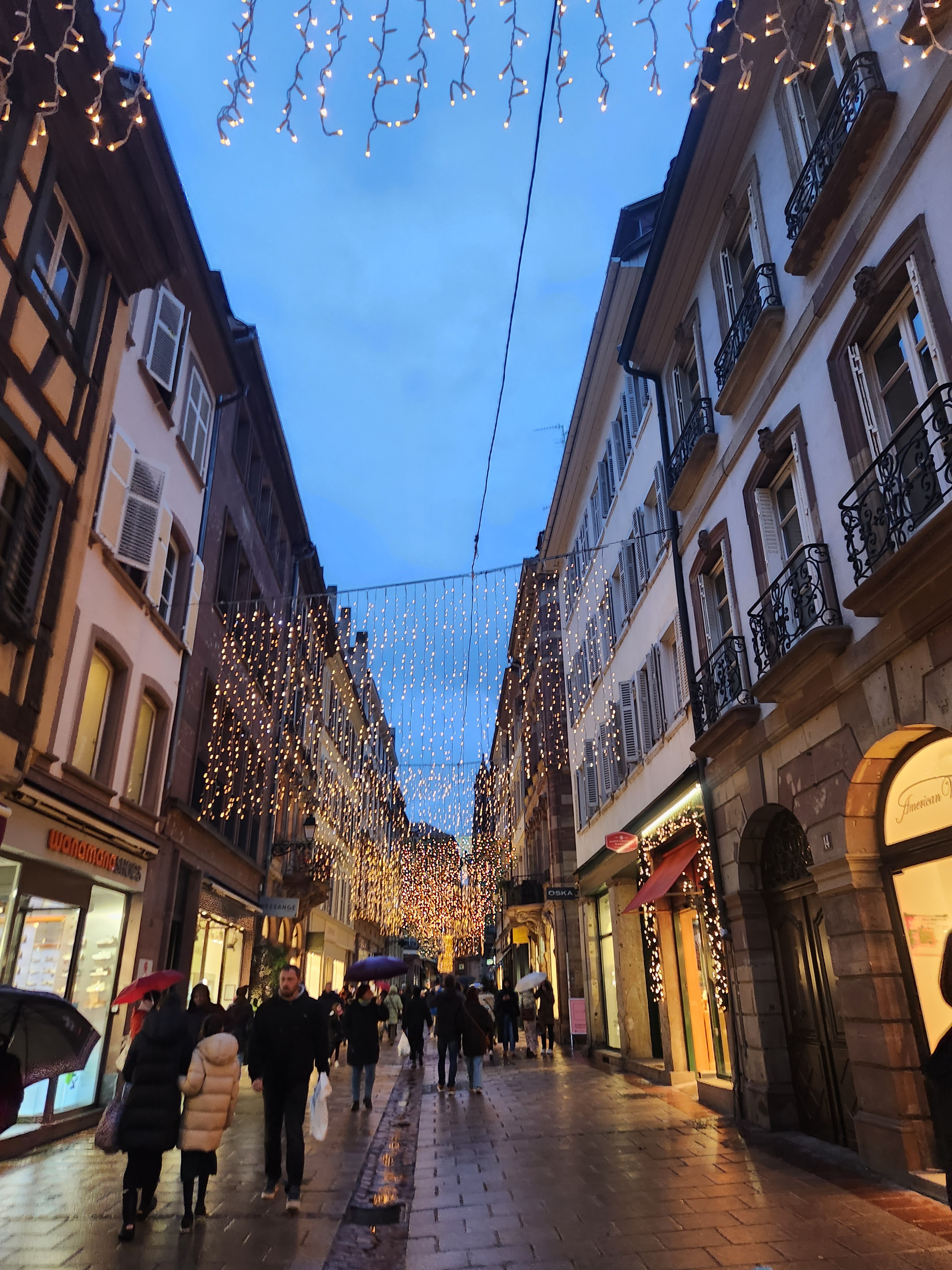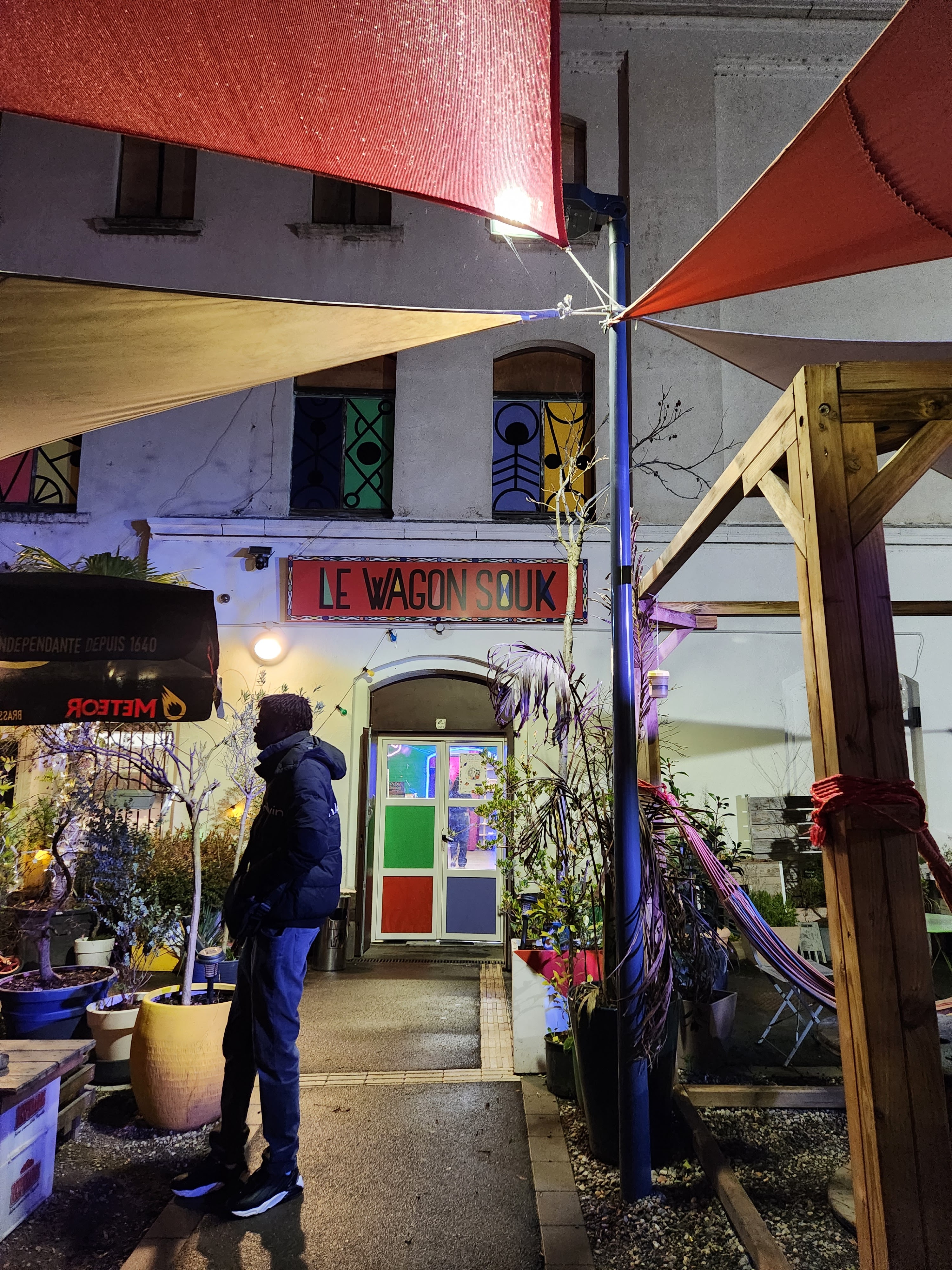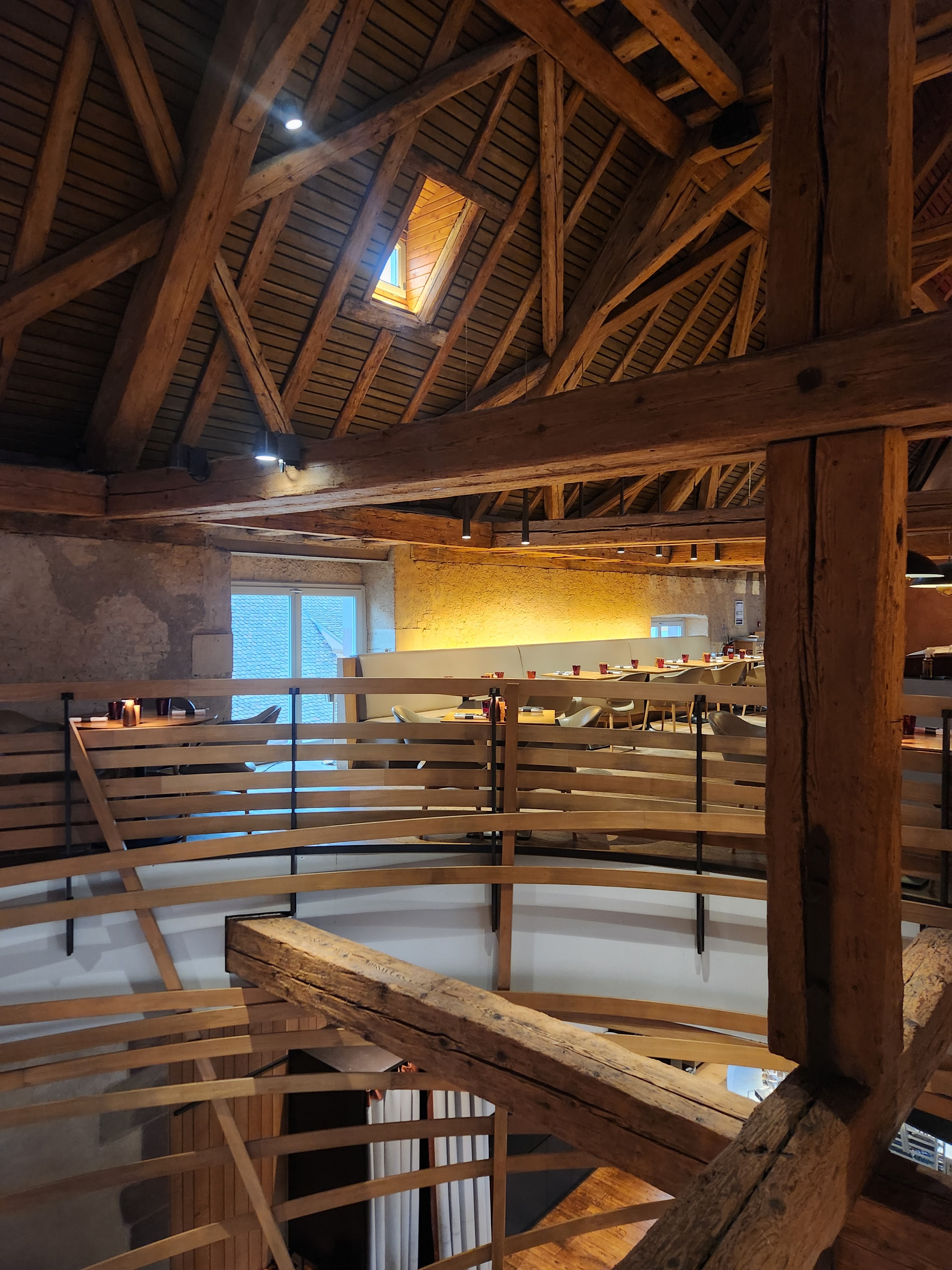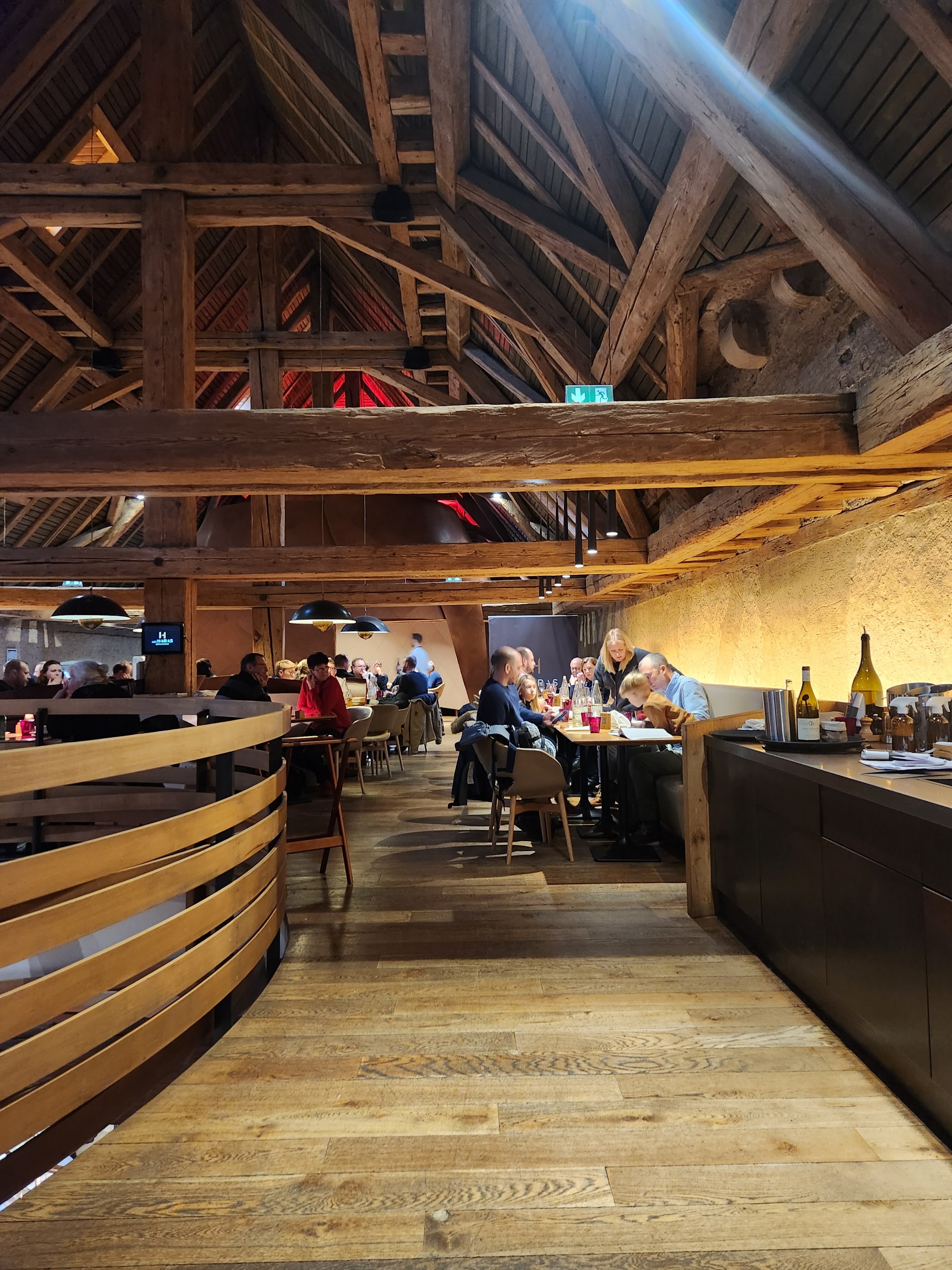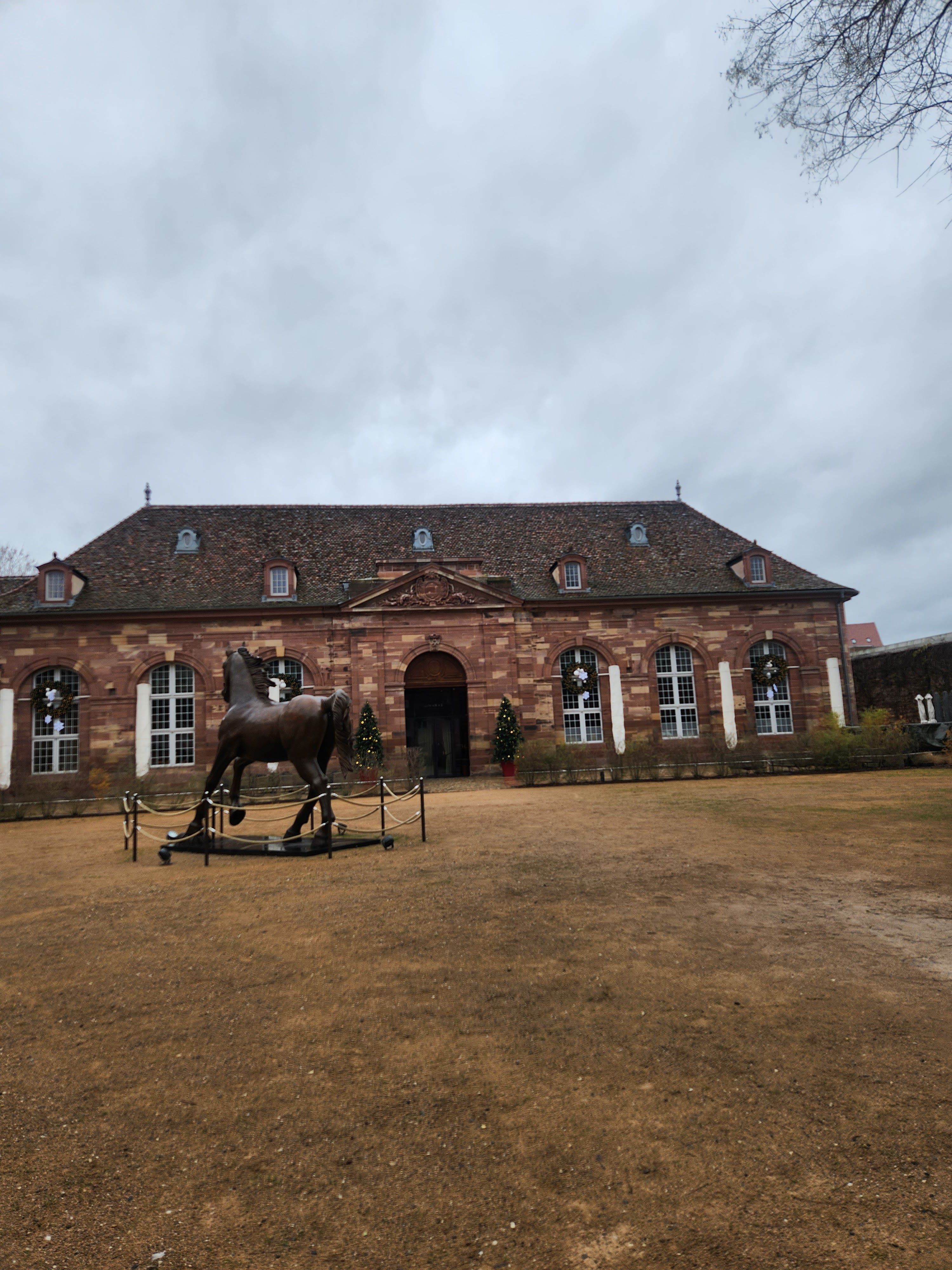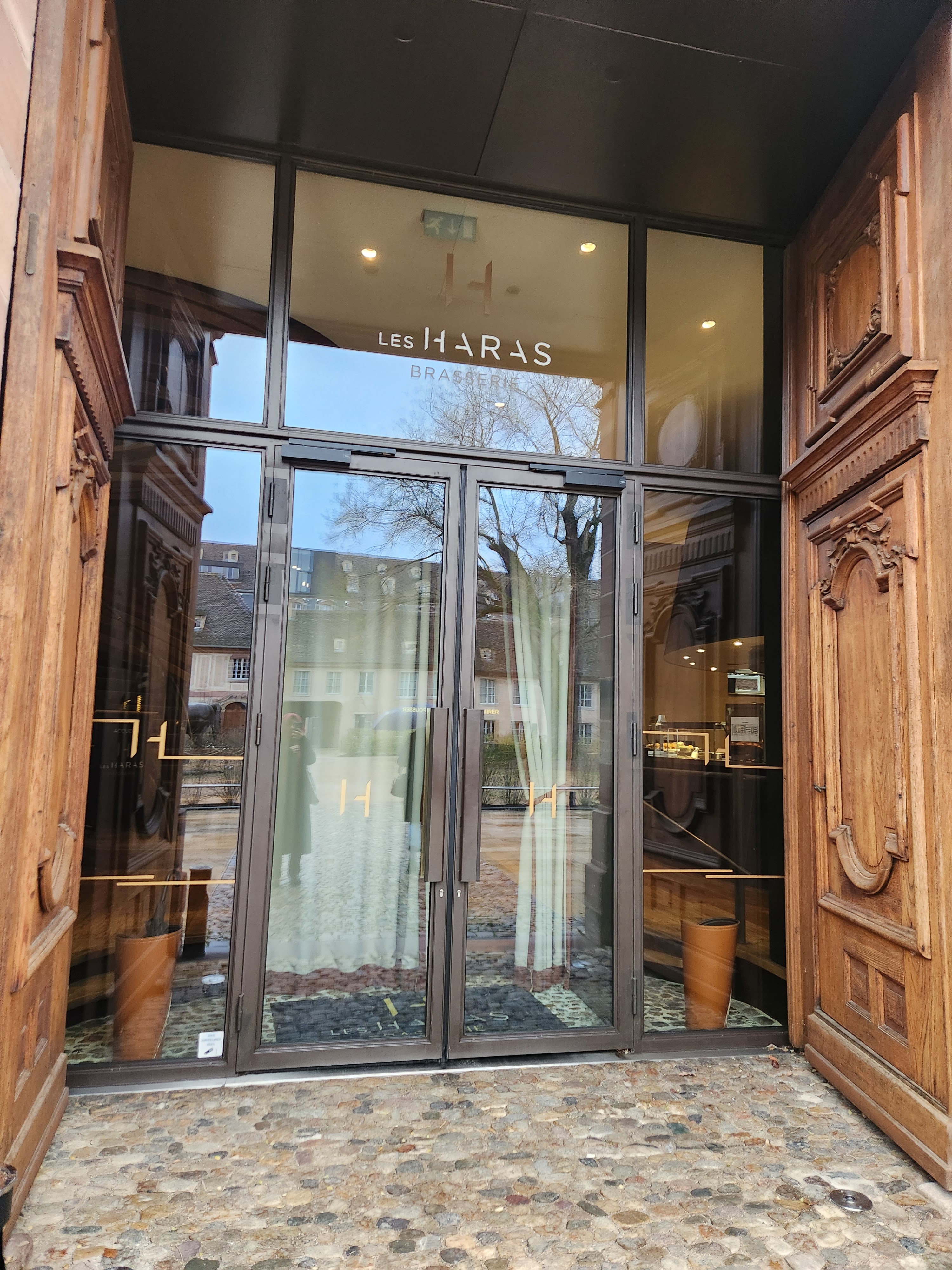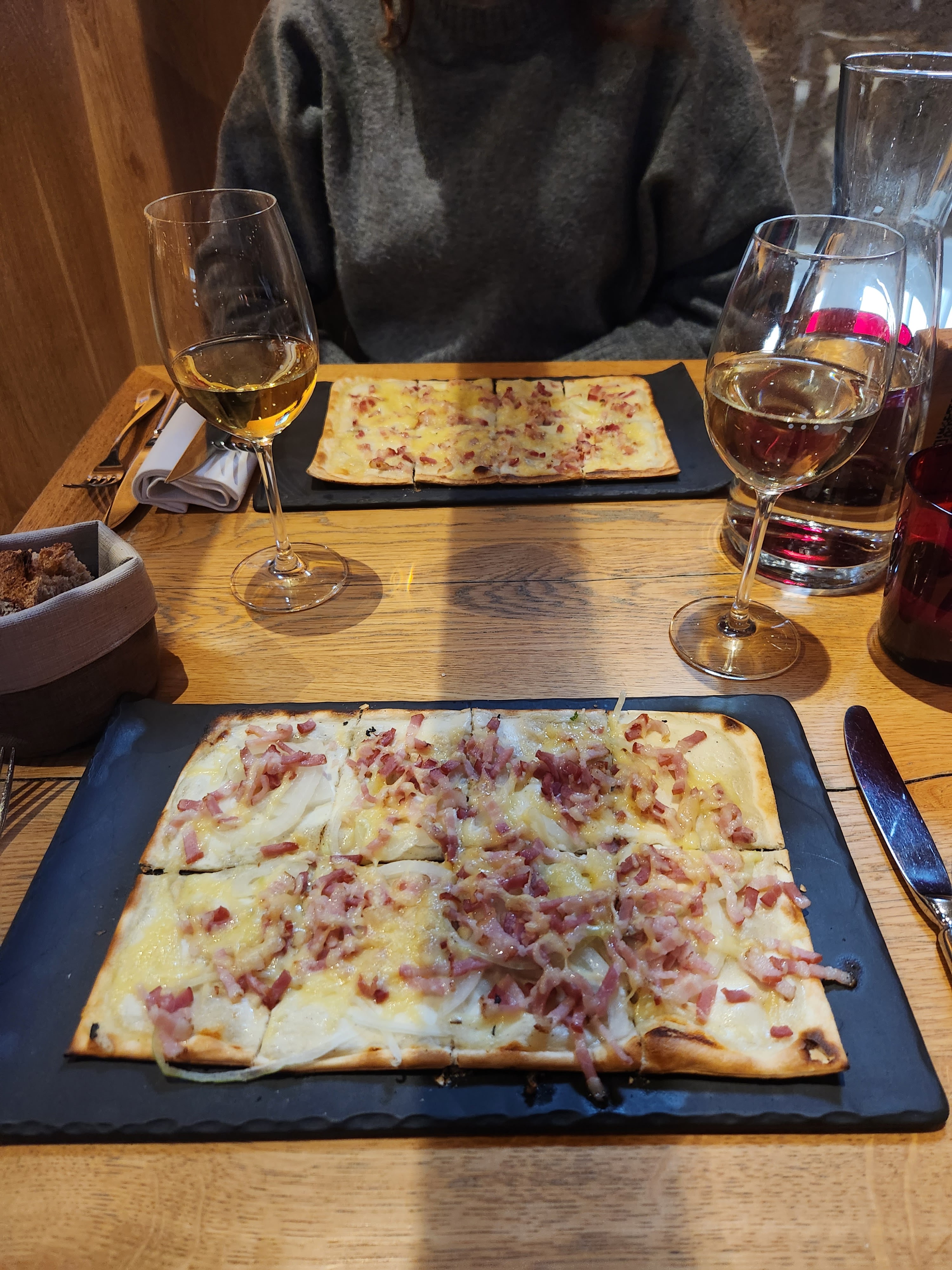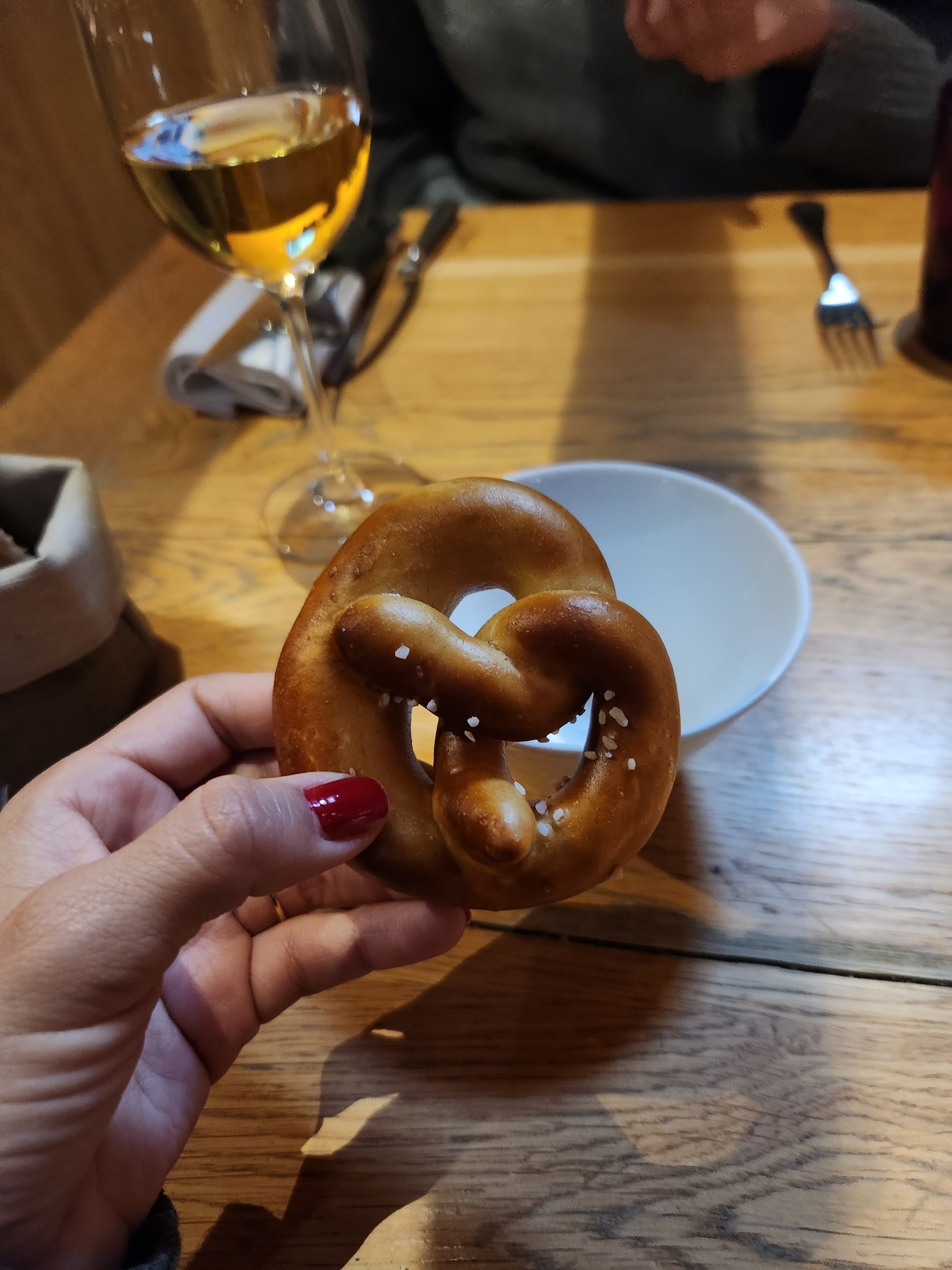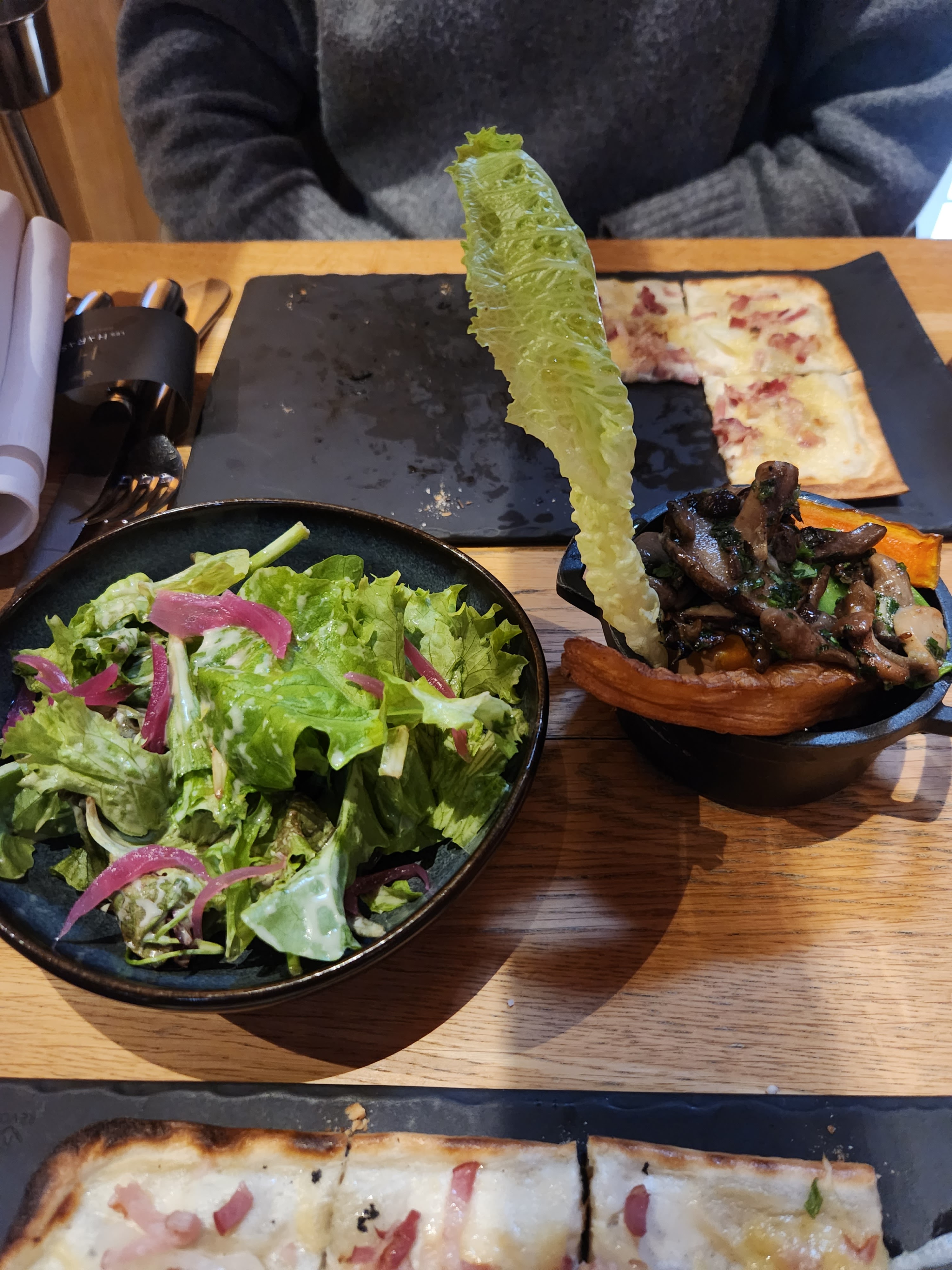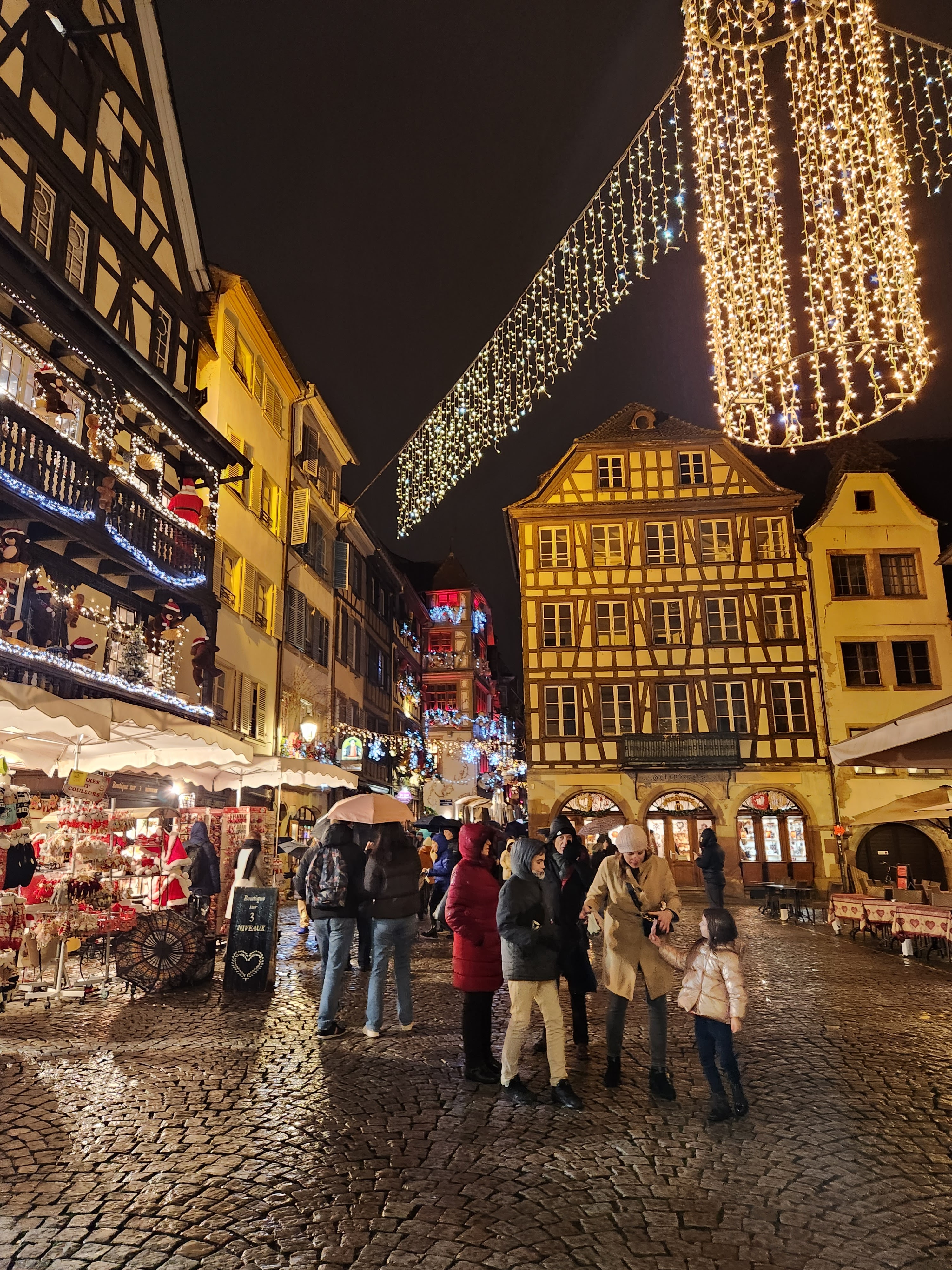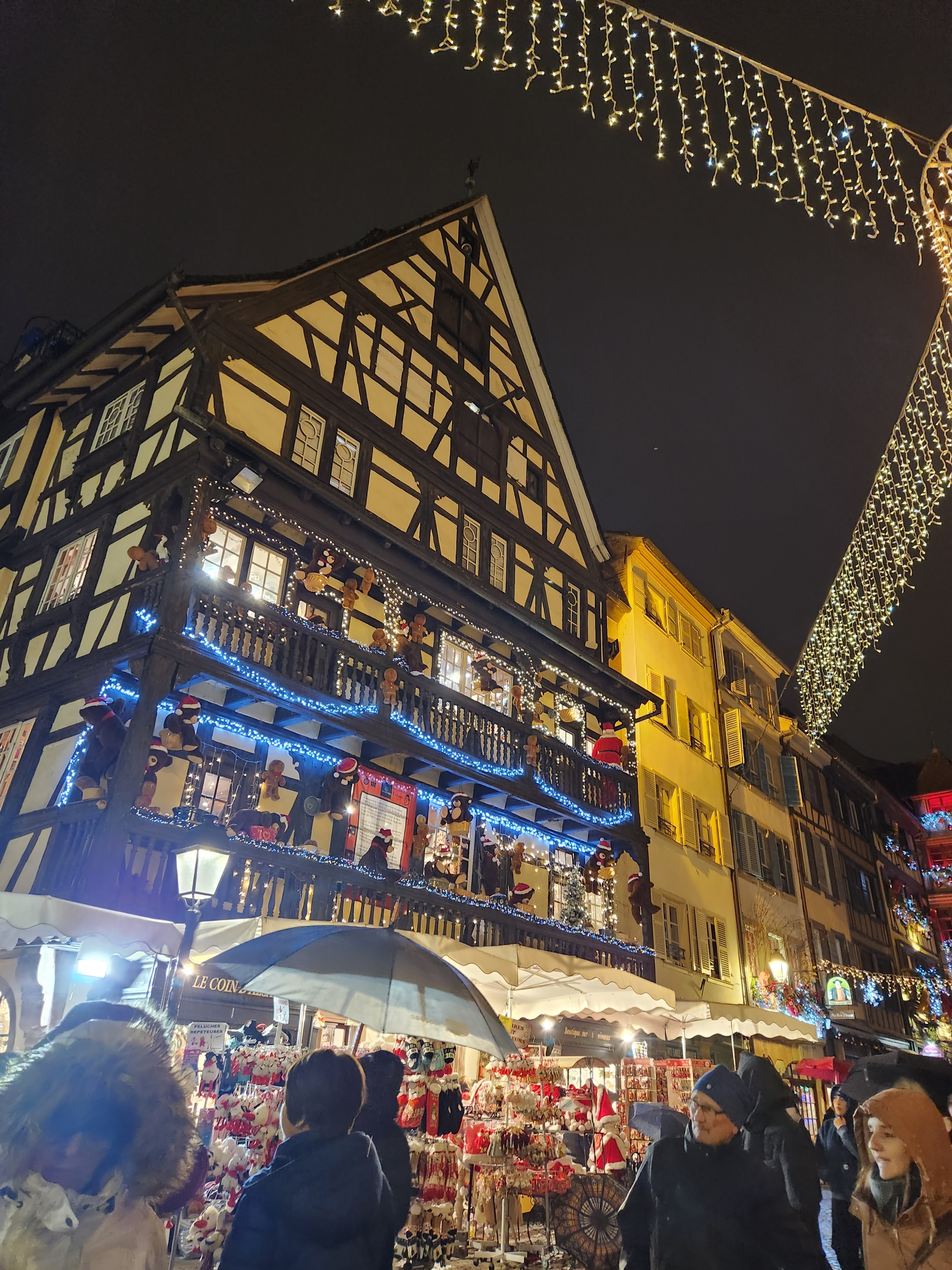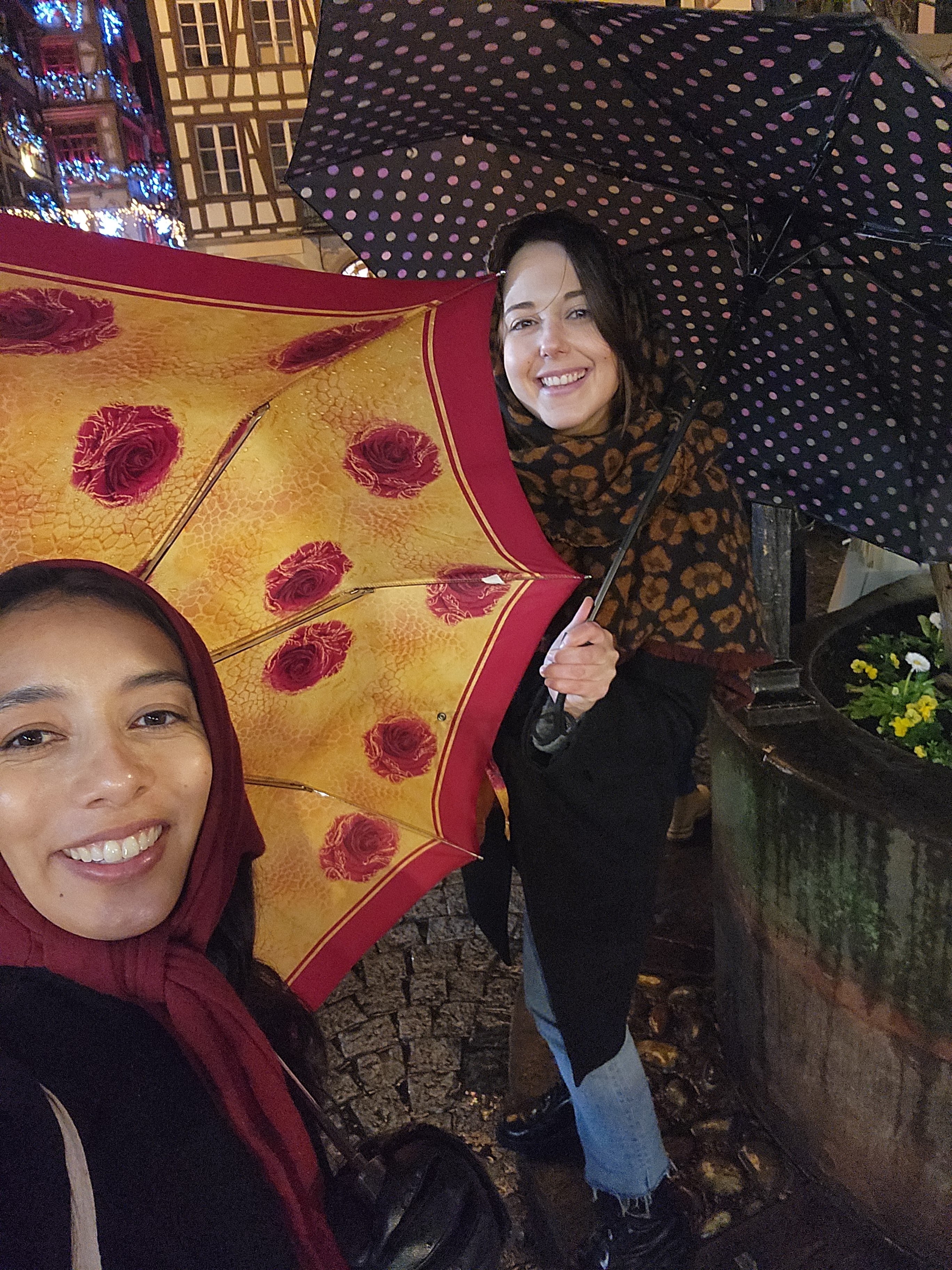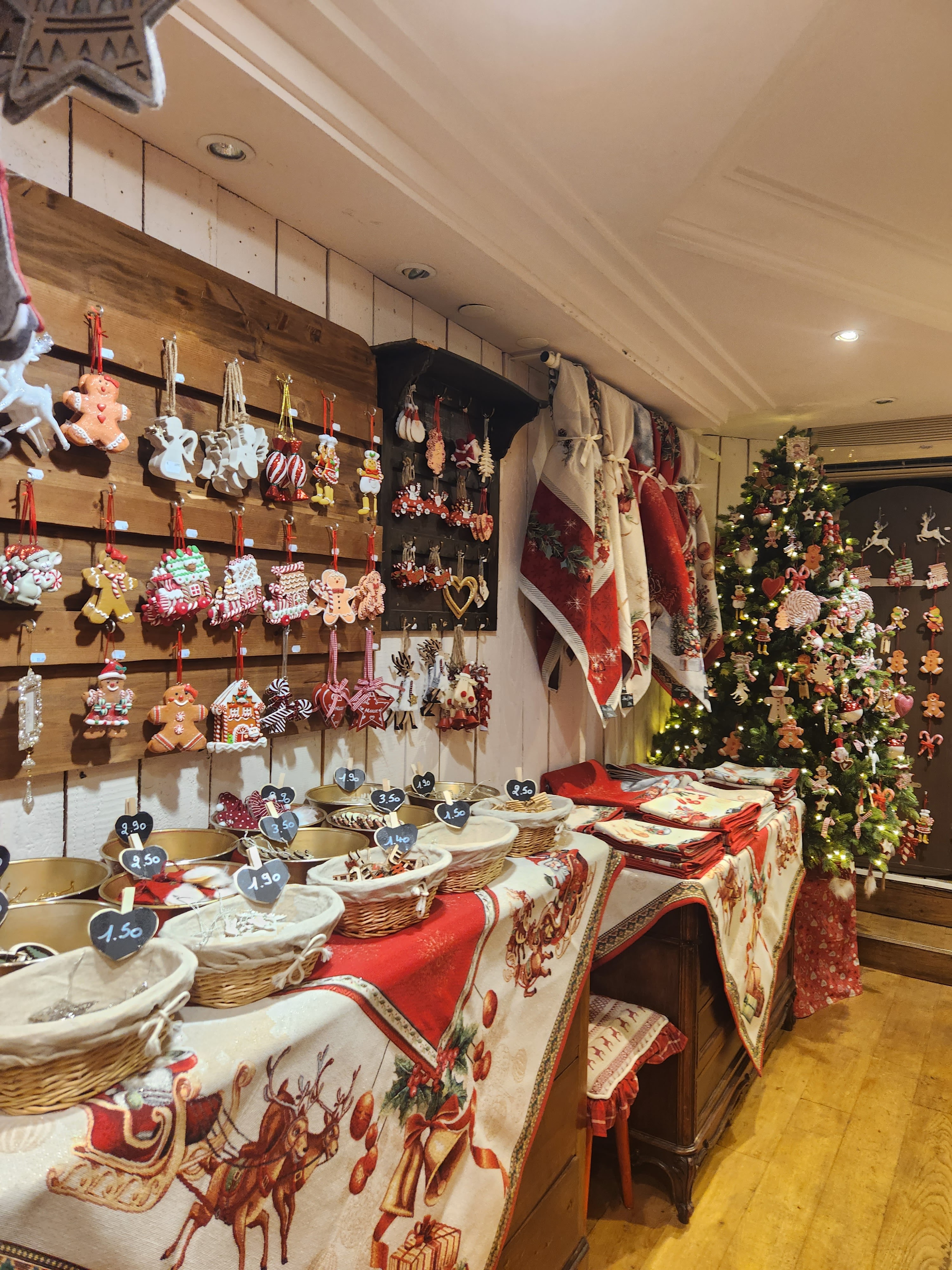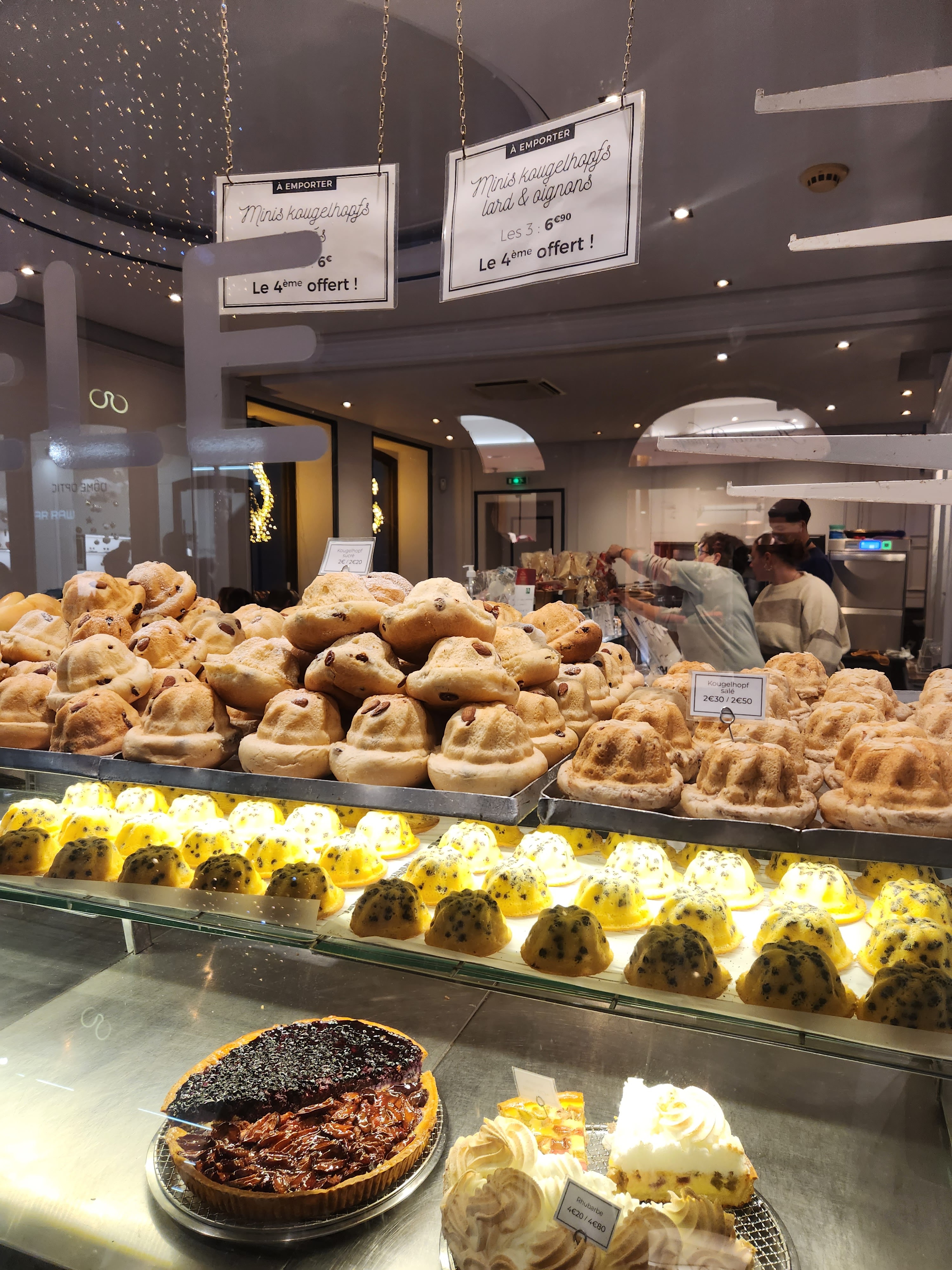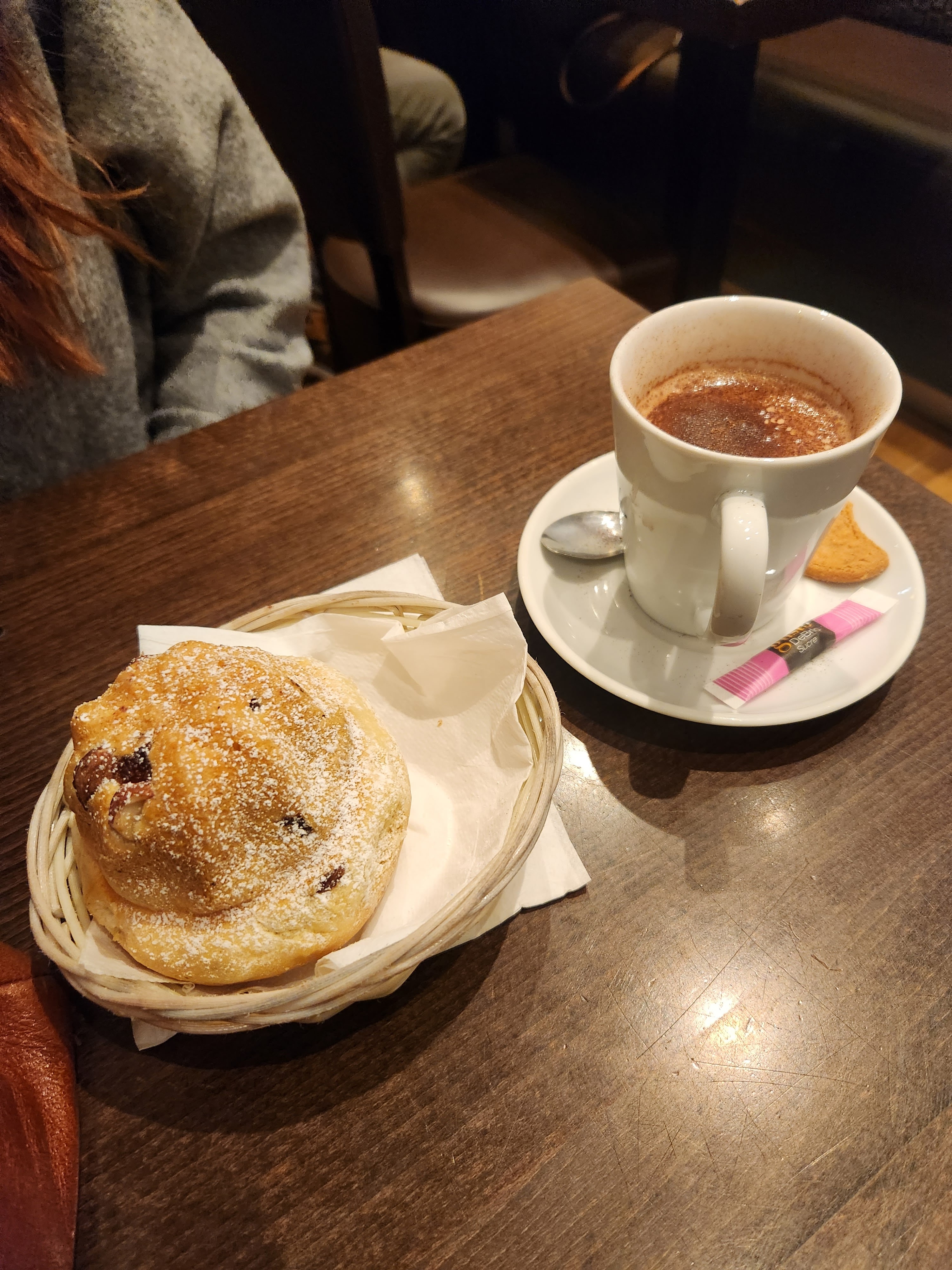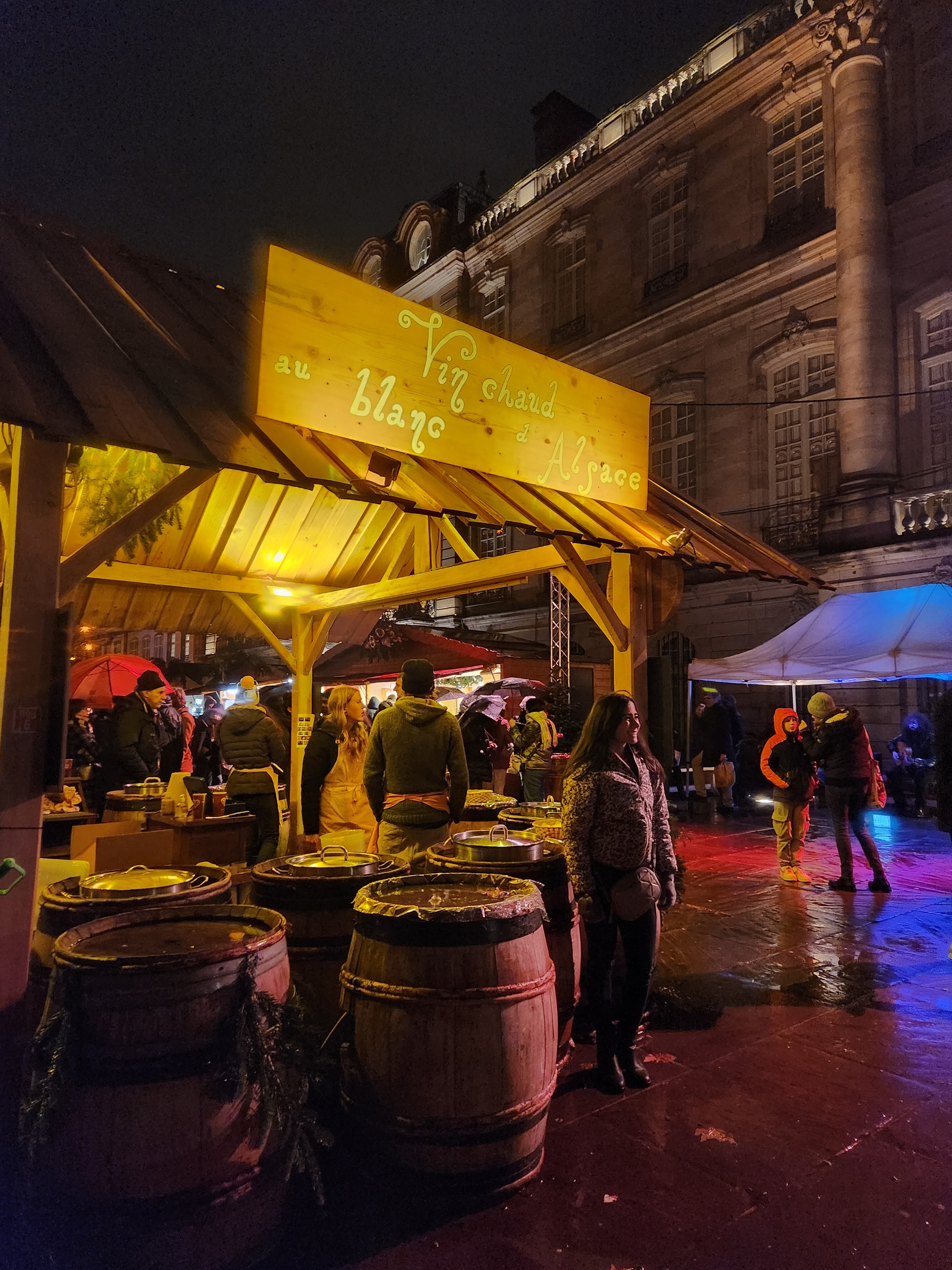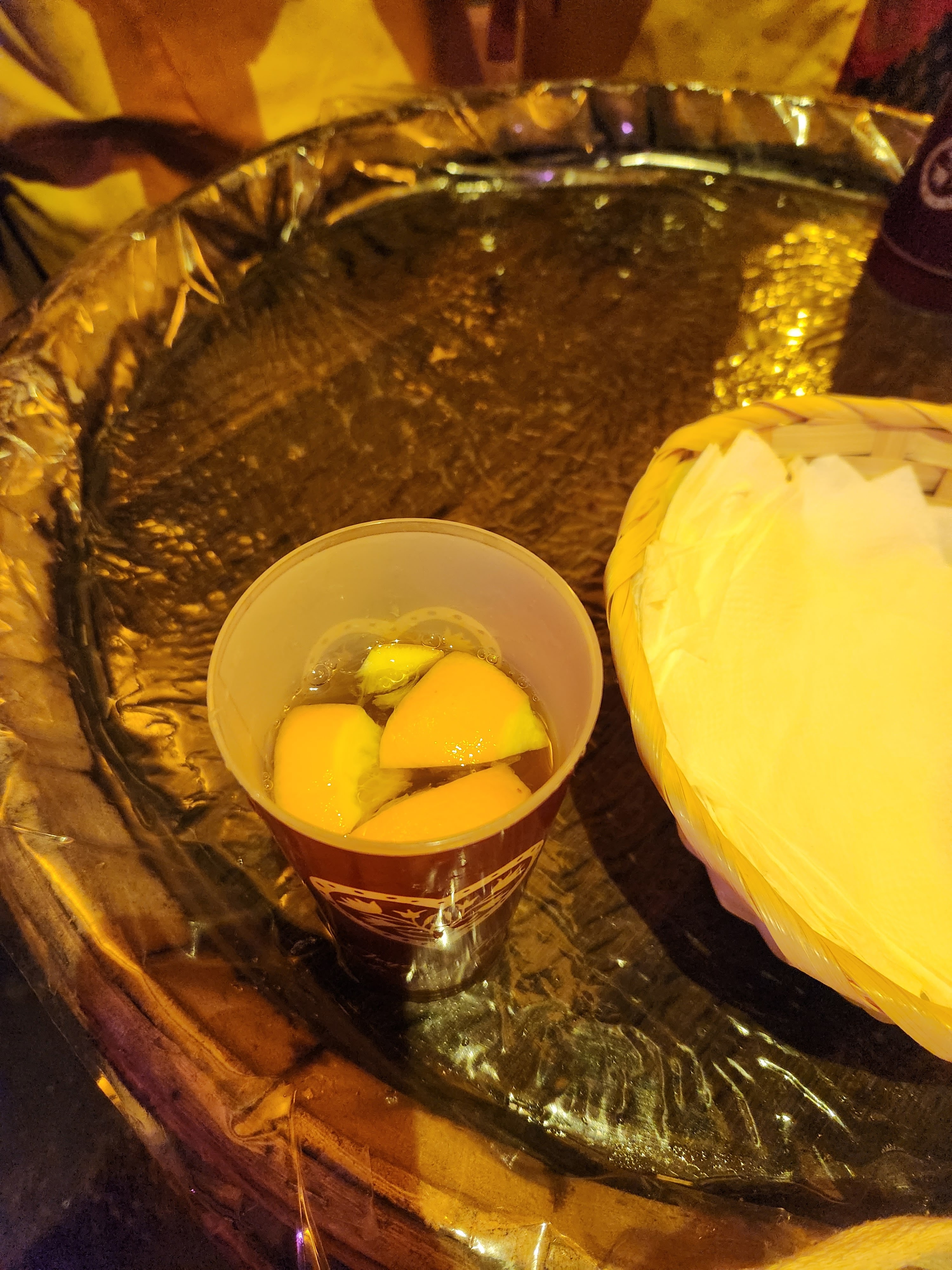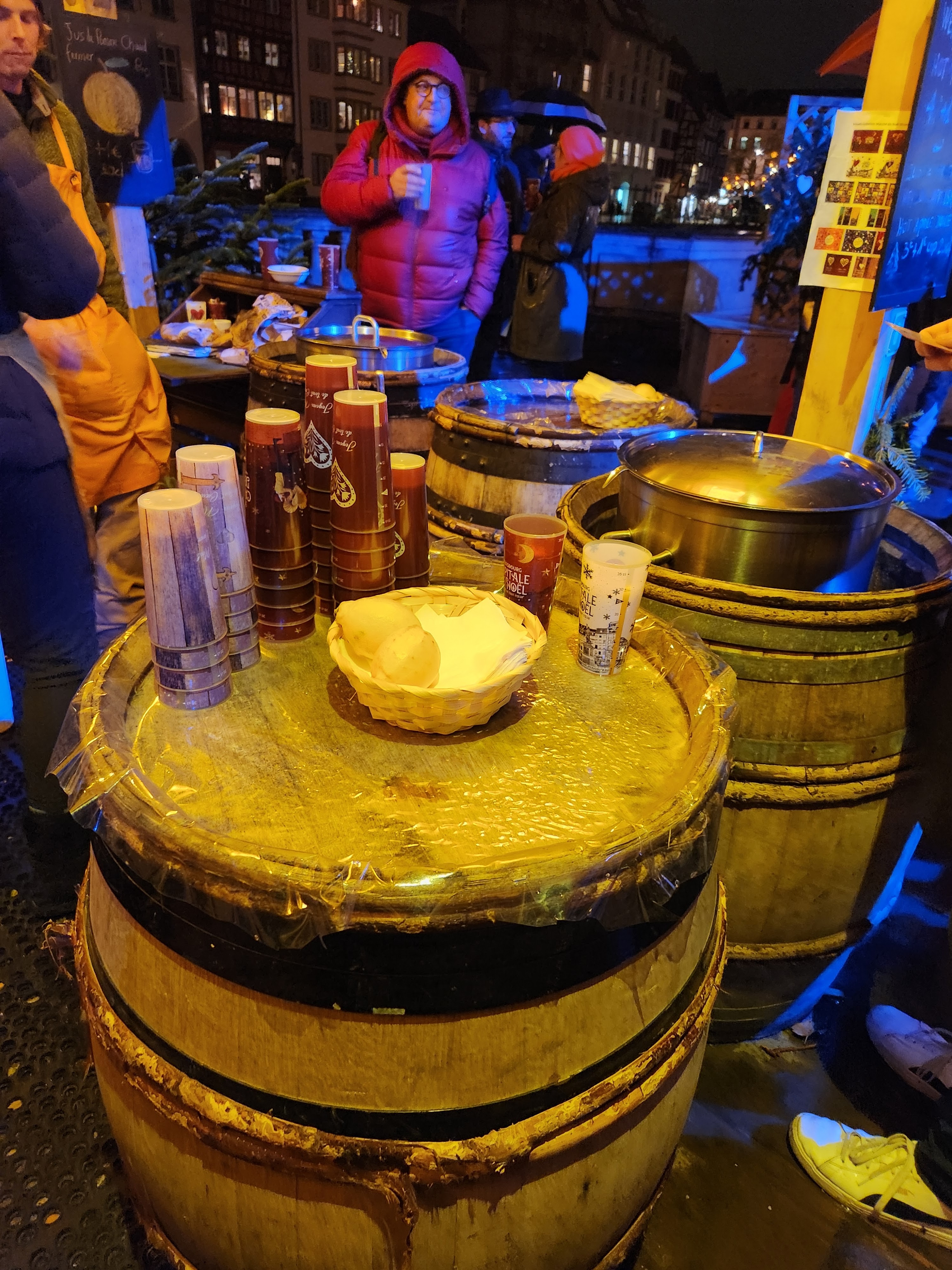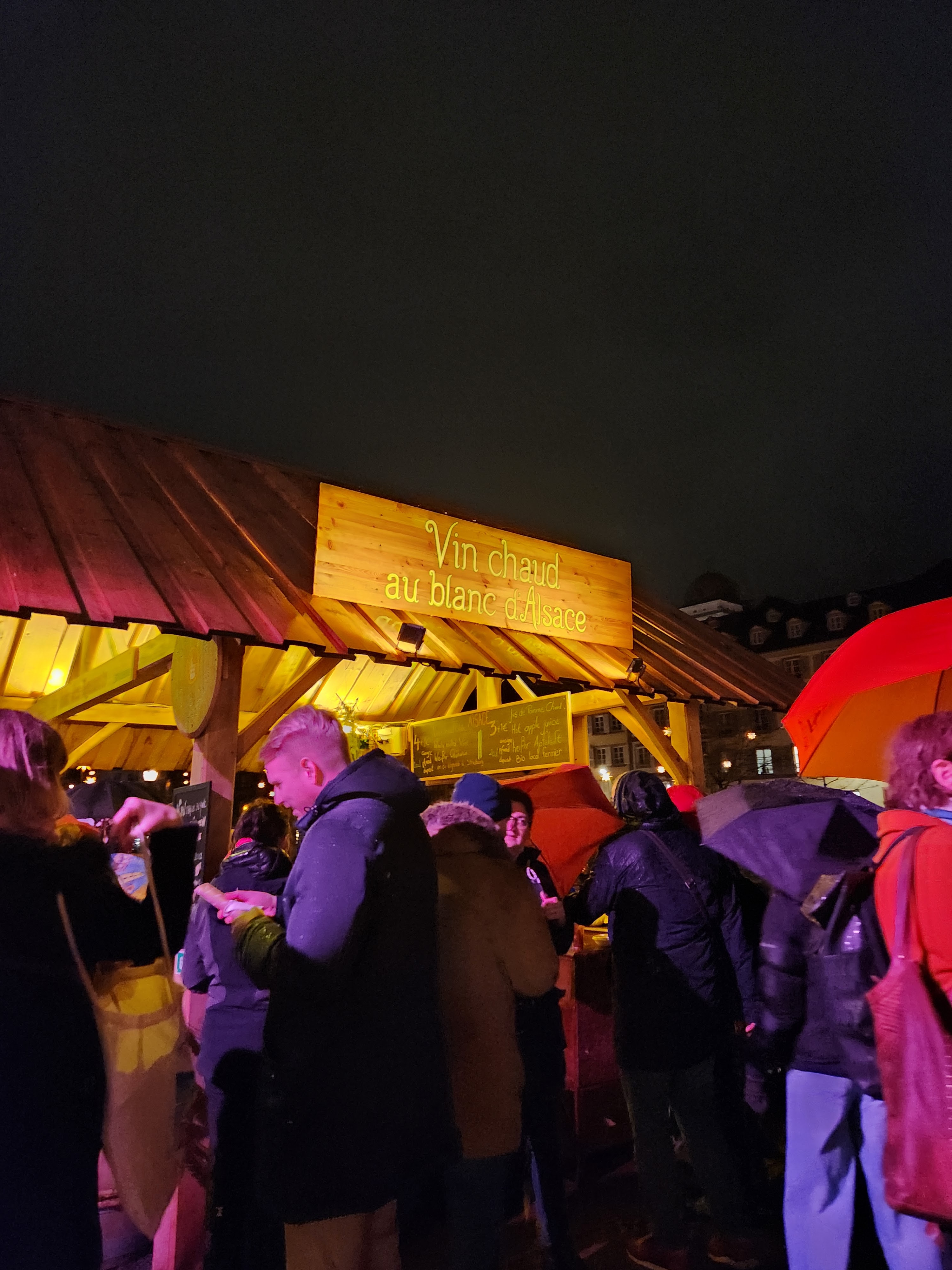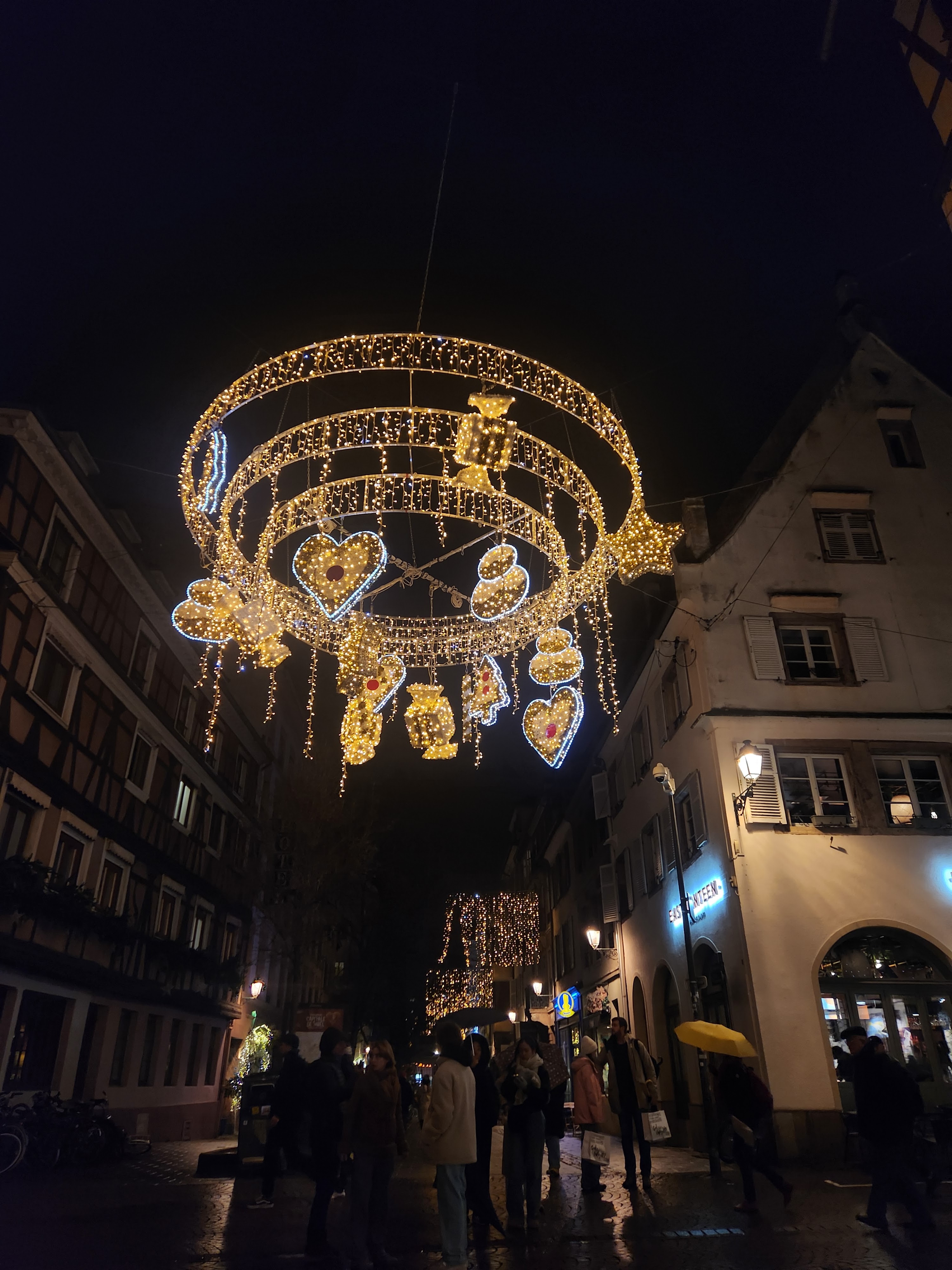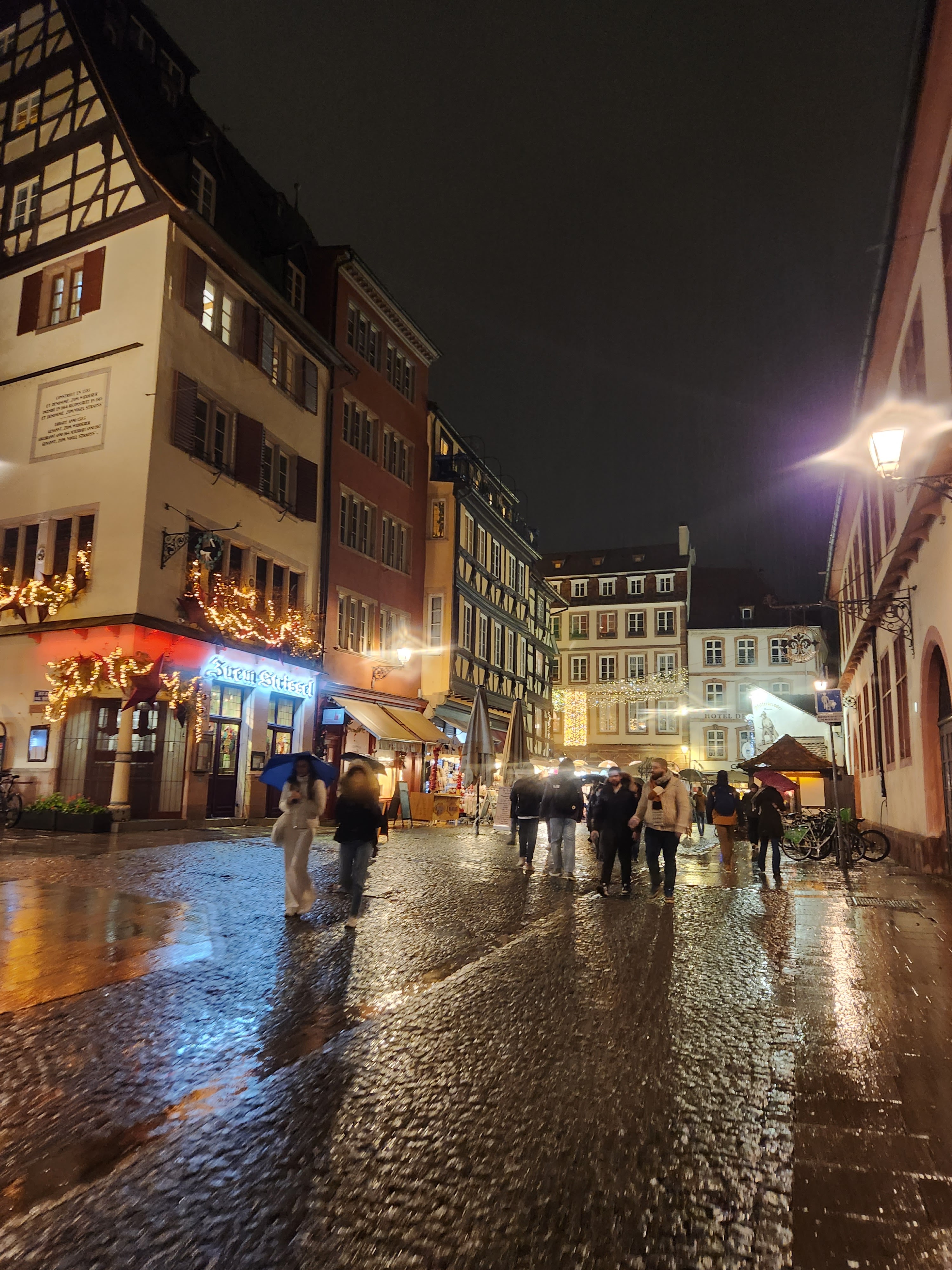I’ve had my fair share of European Christmas market experiences. I would say they are all magical, proud of the cultural folklore, full of traditional foods, and filled with the finest artisanal crafts and décor.
Since my stay in France would be for five days, I decided that this would be my opportunity to visit the most famous market, or Christkindelsmärik in the country. The oldest market in France that dates back to the 1570s and has roughly 300 chalets set up throughout the city center.
After my two days in Paris, I made my way to my friends hometown in the Grand Est region. I spent a couple of days exploring two quaint towns and familiarizing myself with a more quiet French lifestyle before hopping back on a train with my friend to Strasbourg. Initially I had in mind that Strasbourg was a small village. I envisioned a small town like from Beauty and the Beast. Oh was I wrong.
Strasbourg is located in the smallest region in the country, the Alsace region, which is along the Rhine river plain and right next to Germany. It is also the capital of the region and the official seat of the European Parliament. The city is by no means a small village, it has a population of roughly 277,000. Outside of the old center, buildings are modern and there are three colleges, which brings in many youth to the city.
Strasbourg is a unique blend of cultures. It was conquered and re-conquered a number of times. Depending on who you ask, some may say it was originally Germany, while some identify with the region itself. The city is part of the larger Grand Est region, but of the three smaller regions in it, it is part of Alsace, which was mentioned earlier. Since the city was controlled by different ruling powers, it has many German elements that are extremely visible today in its architecture but audibly French .
Stick with me during this portion. Beginning in the 13th century, it was ruled by the Roman empire, then annexed by King Louis XIV, then up for trade, then transferred back to Germany because of the Treaty of Frankfurt, afterwards given to France under the Treaty of Versailles, then back to Germany under Nazi power, around 1949 it became the seat of the European parliament.
It’s likely that in all that history, I missed some exchanges and millions of details, but just know that today it is part of France but celebrates both German and French cultures.
The beautiful cathedral took over 300 years to build and is over 1,000 years old. It’s a stunner and one of the main attractions of the city even amongst the different Christmas market locations.
On the first night that we arrived, we didn’t jump into the market scene. We actually ate at a traditional restaurant that specializes in Alsatian food, called Fink’ Stuebel located on Quai Saint-Thomas road. It’s a lively area and I booked a reservation two months prior to our arrival.
A suggestion, make sure you go hungry, because the portions are massive and it’s likely that you will leave with an extremely full belly. The food is hardy, heavy, and carby. The regional food is big on pork and known for it’s beer and wine. On this particular night I ordered boiled beef that came with a salad , horseradish, and a large serving of potatoes.
Some other specialties from this region is a sauerkraut called choucroute, and is prepared with potatoes, different sausages, wine, and salted charcuterie meats. Charcuterie refers to the specific way meats are salted and prepared prior to refrigeration tools, now it’s used to preserve this tradition. Puff pastries, egg noodles, casseroles, pretzels, and tartes with a thick cultured cream are some other popular foods that are enjoyed from locals and visitors.
We ended our night by salsa dancing, “What, salsa dancing!”, you may think to yourself, yes, salsa dancing. My friend, one of the coolest French gals I know loves to salsa and will find this scene in any city she is in. I wasn’t expecting a huge turnout, but we decided to go to this cool bar lounge space called Le Wagon Souk. For whatever reason, I always think certain countries or cities have limited exposure to other dance forms or music. In this day an age, everyone with internet access can learn how to salsa or listen to the music on different platforms. It shouldn’t come as a shock to me that I saw a mix of people dancing this evening. From French, to Latino, to Africans all living in this city, they enjoyed and shared in this experience together. I loved it and it was the perfect way for my food to go down. What a night!
On our second day in Strasbourg we slept in a bit. Our plan for the afternoon was to take a stroll around the city before getting to our reservation at Brasserie Des Haras at 1pm. This special place is a restaurant and hotel, which used to serve as a royal former horse stable in the 18th century. The equestrian academy went through many years of active learning and riding in the mid 1800s, but finally closed its doors after 1845. The horses were removed in the early 2000s, and shortly afterwards plans to transform the building into what it is now.
When possible, I like to splurge and enjoy a meal at a Michelin star restaurant. I had come across Brasserie Des Haras on the New York Times YouTube page and knew that it was worth a try. Upon arrival I was blown away at the beautiful spiral design. It was equally earthy and chic, I knew we were in for an experience.
Since we planned on eating at the market, we decided to each order flammekuche, a specialty of the region. The dough is rolled out super thin and layered with crème fraiche and pieces of onion and French fatty bacon, so good and flavorful. We also ordered two sides, a seasonal salad and grilled vegetables. We topped off our order with two local wines from the region, a riesling and gewurtzraminer. We were also given free bread and a cute little pretzel. The chef focuses on traditional dishes and specialties but presents it in a modern way. A drastic change from the traditional food we had an evening prior. Both good and perfect for a wintery season.
The rest of our day was spent wondering around the markets. We took our time going in and out of stores, strolling through stalls, snacking on local treats, drinking punch, and stopping often to gaze at the beautiful building and lights. It was all so charming and sweet. Despite the drizzly weather that we got both days, we didn’t mind, with our umbrellas in hand, there was nothing that could stop us.
We took a break just once to sit at a cafe and enjoy a tiny gugelhupf, a cake baked in a ring pan, very similar to other bundt cakes in Europe. We sat and rested, there was no rush since we had agreed to be out until 10pm. December was the month that I told myself I would treat myself to breads and chocolates of all sorts, and I was doing just that.
One of the musts of any market is the mulled wine or fruit punch. At this market I tried the vin chaud, it was a bit more bitter and less sweet than other mulled wines I’ve tried. At the vin chaud stations there are large barrels that the servers serve from. It’s a popular meeting point that is in designated areas and brings a nice warm feeling to the throat and body.
The only thing I purchased from the market was a pretzel ornament, which is very representative of the region. I was saving more space and money for some German ornaments that I would be browsing in the days to come. The sole purpose was to enjoy the decor, spirit, and food.
We ended near the giant Christmas tree standing at 107 feet tall. It was the perfect way to end our night. Roughly 2 million visitors come to Strasbourg each year to enjoy in its beauty. I was one of them. It’s a special place that is worth visiting if you happen to be in France in December. I will cherish the time here with my friend. It was a great way to kick off my holiday vacation from work. Until next time Strasbourg.
